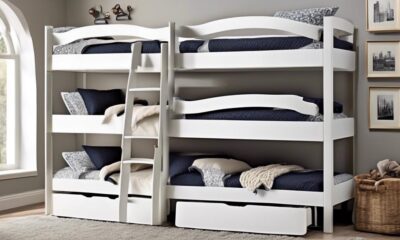Appliances
How Much Power Does a Ceiling Fan Draw?
2025
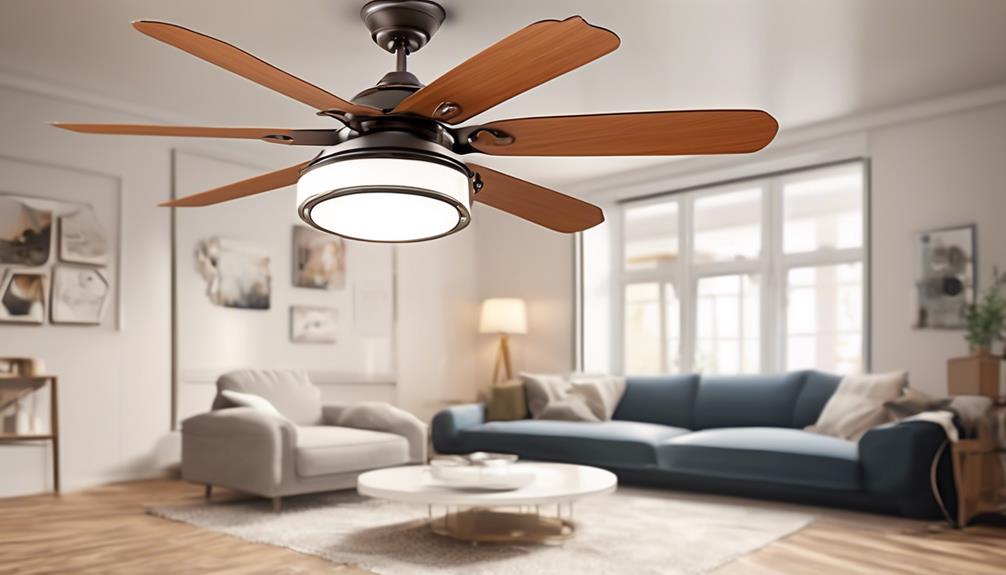
Have you ever pondered over the amount of energy a ceiling fan uses?
Well, my fellow readers, let me shed some light on this topic. Like a gentle breeze on a warm summer's day, a ceiling fan quietly spins above us, providing comfort and relief.
But just how much electricity does it require to keep us cool? In this article, we will delve into the world of ceiling fans and explore the factors that affect their power consumption.
From understanding wattage and fan speed to calculating your fan's power usage, we will equip you with the knowledge to make informed decisions about energy-efficient ceiling fans.
So, let's embark on this journey and uncover the truth behind ceiling fan power draw.
Key Takeaways
- Factors such as fan motor efficiency and blade pitch can affect the power consumption of a ceiling fan.
- The wattage of a ceiling fan is influenced by factors such as fan size, motor efficiency, and speed settings.
- The energy efficiency of a ceiling fan can vary at different speeds, and fan size also plays a role in power draw.
- Calculating the power usage of a ceiling fan can be done through various methods, including using a wattmeter, and understanding power usage is important for energy conservation.
Factors Affecting Ceiling Fan Power Consumption
There are several factors that can significantly impact the power consumption of a ceiling fan. Two key factors to consider are fan motor efficiency and the impact of blade pitch.
Fan motor efficiency plays a crucial role in determining the power consumption of a ceiling fan. A more efficient motor will convert a higher percentage of electrical energy into rotational motion, resulting in lower power consumption. When choosing a ceiling fan, it's important to look for models that have high motor efficiency ratings. These fans are designed to consume less electricity while providing the same level of air circulation.
Another factor that affects power consumption is the pitch of the fan blades. Blade pitch refers to the angle at which the blades are set relative to the horizontal plane. Ceiling fans with steeper blade pitches tend to move more air, allowing for better airflow and increased cooling efficiency. However, fans with a higher blade pitch may also require more power to operate. It's essential to strike a balance between blade pitch and power consumption to ensure optimal performance.
To summarize, the fan motor efficiency and the impact of blade pitch are two major factors that can significantly affect the power consumption of a ceiling fan. By choosing a fan with a high motor efficiency and considering the blade pitch, you can optimize energy usage while enjoying a comfortable environment.
Understanding Ceiling Fan Wattage
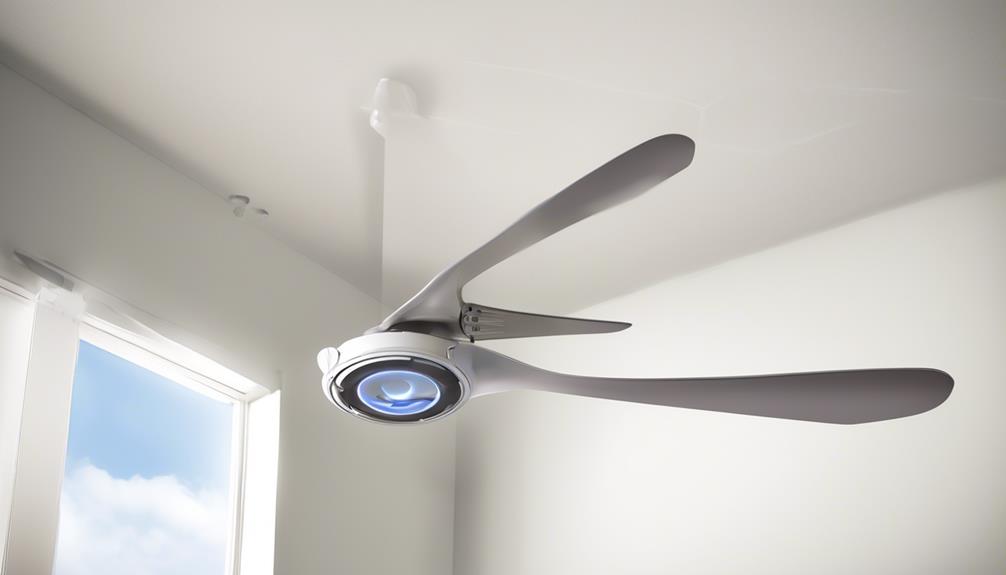
Ceiling fan wattage refers to the amount of electrical power consumed by a ceiling fan during operation. Understanding ceiling fan wattage is crucial when considering energy efficiency and power consumption. Several factors influence the wattage of a ceiling fan, including its size, motor efficiency, and speed settings.
The size of the fan blades directly affects the wattage. Generally, larger blades require more power to operate at the same speed as smaller blades. Additionally, the efficiency of the fan motor plays a significant role in power consumption. High-quality motors with better performance tend to have lower wattage.
Furthermore, the speed settings of the fan impact the wattage. When a ceiling fan is set to operate at higher speeds, it consumes more power. Conversely, lower speeds result in reduced power consumption.
Another important aspect to consider is the impact of fan direction on power consumption. Ceiling fans are designed to operate in two directions: clockwise and counterclockwise. The direction of the fan can affect the efficiency and power consumption. In hot weather, a counterclockwise direction creates a cooling breeze, allowing for higher thermostat settings and lower energy usage. Conversely, in colder months, a clockwise direction helps distribute warm air throughout the room, reducing the need for auxiliary heating and lowering energy consumption.
Understanding ceiling fan wattage and the factors influencing it enables homeowners to make informed decisions about energy efficiency and power consumption.
The Relationship Between Fan Speed and Power Draw
When adjusting the speed of a ceiling fan, the power draw of the fan changes accordingly. This means that the fan's energy consumption is directly influenced by its speed settings.
Here are some key points to consider regarding the relationship between fan speed and power draw:
- Fan Speed and Energy Efficiency: Generally, ceiling fans are more energy-efficient at lower speeds. When the fan is operating at a slower speed, it requires less power to rotate the blades and circulate air. As the speed increases, the power draw also increases, resulting in higher energy consumption. It's important to note that the difference in energy efficiency between different speed settings may vary depending on the specific fan model.
- Impact of Fan Size on Energy Consumption: The size of the fan also plays a role in its power consumption. Larger fans tend to have higher power draw compared to smaller ones, even when operating at the same speed. This is because bigger fans require more power to rotate their larger blades and move a greater volume of air. Therefore, if energy efficiency is a priority, opting for a smaller fan may be a more suitable choice.
- Variable Speed Fans: Some ceiling fans come with variable speed settings, allowing users to adjust the fan speed to their preference. These fans offer flexibility in terms of energy consumption, as they allow users to choose a speed that balances their comfort needs with energy efficiency.
Understanding the relationship between fan speed and power draw is essential for maximizing energy efficiency and reducing electricity costs while enjoying the comfort provided by a ceiling fan.
How to Calculate the Power Usage of Your Ceiling Fan
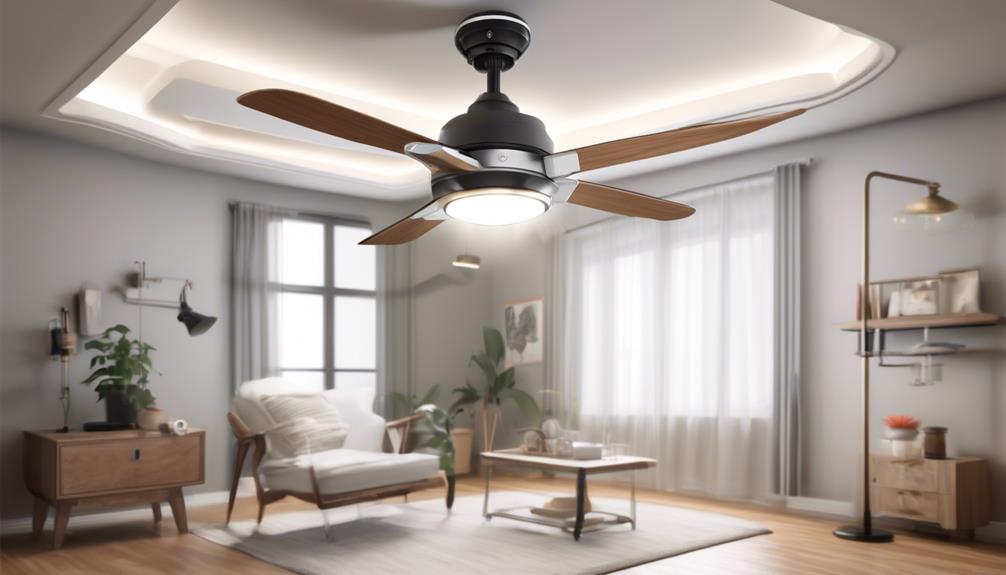
To accurately determine the power usage of your ceiling fan, it's important to calculate the energy consumption based on the specific fan speed and size. Calculating the energy usage of your ceiling fan can help you understand its power consumption and enable you to make informed decisions on maximizing efficiency.
To calculate the power usage of your ceiling fan, you'll need two key pieces of information: the fan's wattage rating and the number of hours it operates. The wattage rating is usually indicated on the fan or its packaging. Multiply the wattage rating by the number of hours you use the fan per day to get the daily energy usage. For example, if your fan has a wattage rating of 60 watts and you use it for 4 hours a day, the daily energy usage would be 240 watt-hours.
To maximize efficiency and reduce energy consumption, consider using your ceiling fan in conjunction with your air conditioning or heating system. By circulating the conditioned air throughout the room, the fan can help distribute the cool or warm air more effectively, allowing you to set your thermostat at a higher or lower temperature.
Calculating the power usage of your ceiling fan is a straightforward process that can provide valuable insights into your energy consumption. By maximizing efficiency and understanding the energy usage of your fan, you can make informed decisions to reduce your overall energy consumption and save on utility costs.
Exploring Energy Efficiency Ratings for Ceiling Fans
Exploring different energy efficiency ratings can provide valuable insights into the power consumption of ceiling fans.
When it comes to ceiling fan energy efficiency ratings, there are a few key factors to consider:
- Energy Star Certification: Look for ceiling fans that have been certified by Energy Star. These fans have met strict energy efficiency criteria, ensuring that they'll consume less power and reduce energy costs compared to non-certified models.
- Airflow Efficiency: Another important factor to consider is the airflow efficiency rating of the fan. This rating measures the airflow produced by the fan per unit of power consumed. Fans with higher airflow efficiency ratings will provide better cooling while using less electricity.
- Power Consumption: It's also crucial to consider the power consumption of the ceiling fan. This can be calculated by multiplying the fan's wattage by the number of hours it's used per day. By comparing the power consumption of different models, you can choose a fan that fits your energy efficiency needs.
Comparing Power Consumption of Different Ceiling Fan Types
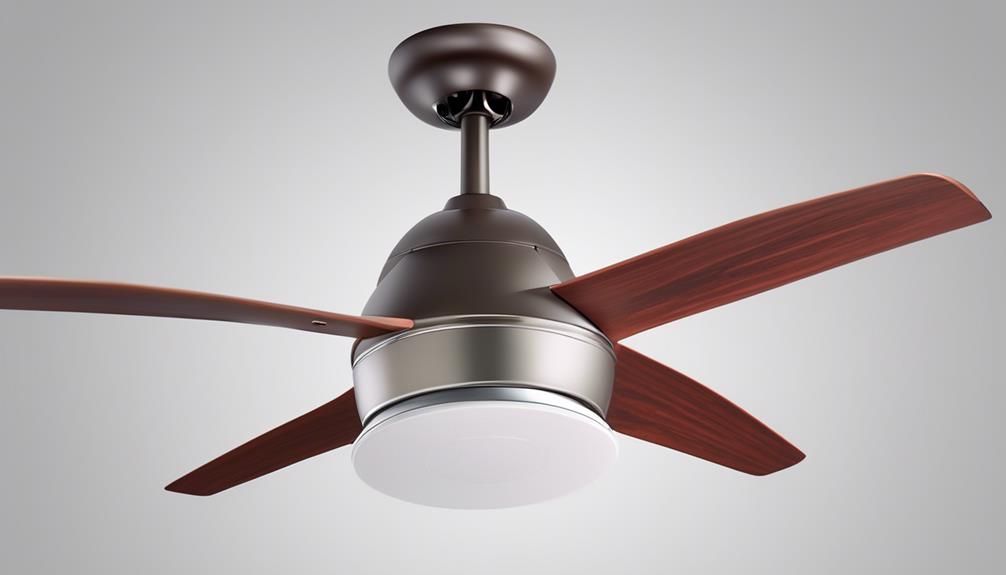
Considering the power consumption of different types of ceiling fans allows for a more comprehensive analysis of their energy efficiency. Factors such as fan size, motor type, and blade design can greatly affect the overall efficiency of a ceiling fan. One of the key factors affecting fan efficiency is the type of motor used.
To illustrate the impact of fan motor type on power consumption, let's compare three common types:
| Motor Type | Average Power Consumption (Watts) | Efficiency Rating |
|---|---|---|
| AC Induction | 70 | Low |
| DC Brushless | 30 | Medium |
| ECM | 20 | High |
AC induction motors are the most commonly used in ceiling fans, but they tend to consume more power compared to other motor types. DC brushless motors, on the other hand, offer better efficiency and consume less power. The most efficient motor type is the ECM (Electronically Commutated Motor), which provides high energy savings with its advanced technology.
The Impact of Fan Blade Size on Power Draw
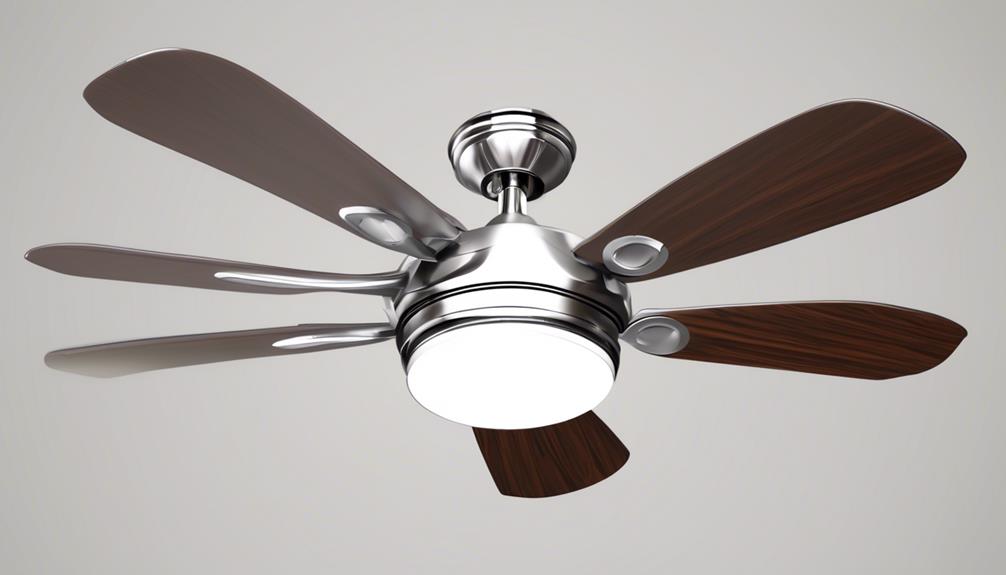
The size of the fan blades directly affects the power draw of a ceiling fan. When it comes to ceiling fans, the size of the blades plays a crucial role in determining the amount of power consumed. Here are three key factors to consider regarding the impact of fan blade size on power draw:
- Blade Length: Longer blades tend to move more air, requiring more power to operate. The increased surface area of longer blades creates more resistance, necessitating a higher power input to maintain the desired airflow. Consequently, ceiling fans with longer blades typically consume more energy compared to those with shorter blades.
- Blade Material: The material of the fan blades can also influence power consumption. Lightweight materials such as aluminum or composite tend to be more energy-efficient than heavier materials like wood or metal. The weight of the blades affects the overall load on the motor, requiring more power to achieve the desired rotation speed.
- Energy Efficiency: Ceiling fan size directly impacts energy efficiency. Larger fans generally move more air, allowing for better air circulation and cooling. Consequently, they can operate at lower speeds and still provide the desired airflow, resulting in reduced power consumption. Smaller fans, on the other hand, may need to operate at higher speeds to achieve the same level of air movement, leading to higher power draw.
Considering these factors, it's important to choose a ceiling fan with the appropriate blade size to balance energy efficiency and airflow requirements.
Can Ceiling Fan Features Affect Power Consumption?
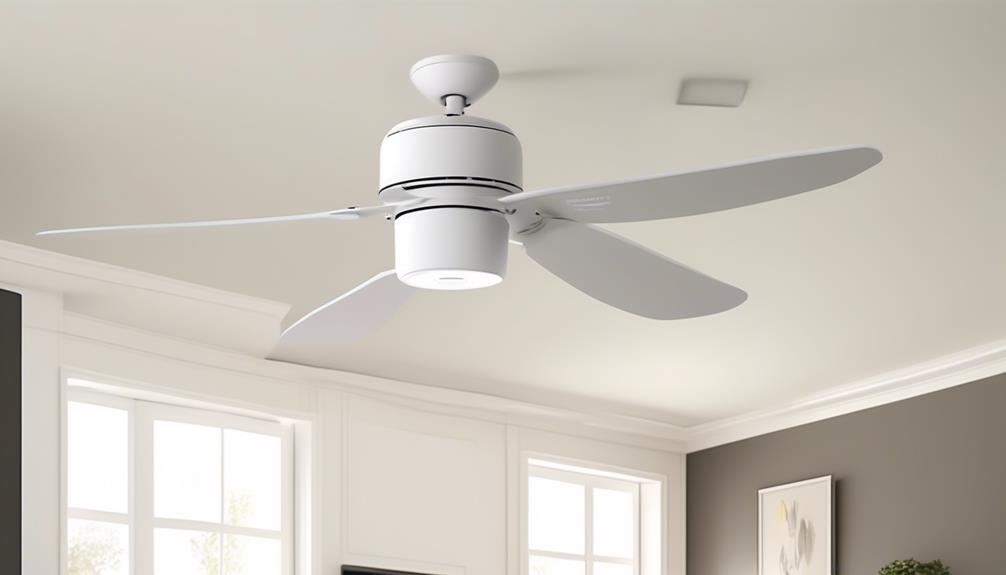
Ceiling fan features have the potential to impact power consumption in various ways. With advancements in ceiling fan technology, new features have been introduced to enhance energy efficiency. One such feature is the ability to adjust the direction of the fan blades.
The direction of a ceiling fan can have a significant impact on power usage. In the summer, a fan set to rotate counterclockwise creates a cooling effect by pushing air downward, creating a breeze. This can make a room feel several degrees cooler, allowing for a higher thermostat setting and reducing the need for air conditioning. As a result, the power consumption of the ceiling fan is offset by the energy saved from using the air conditioner less frequently.
Conversely, in the winter, a ceiling fan set to rotate clockwise creates an updraft that pushes warm air down from the ceiling. This helps to distribute heat more evenly throughout the room, reducing the reliance on heating systems. By using a ceiling fan in conjunction with heating, power consumption can be optimized, leading to potential energy savings.
Tips for Reducing Energy Usage of Your Ceiling Fan

To reduce energy usage of your ceiling fan, consider implementing these efficient practices:
- Regular cleaning: Dust and debris can accumulate on the fan blades over time, causing the fan to work harder and use more energy. By regularly cleaning the blades, you can ensure optimal airflow and reduce energy consumption.
- Adjust fan speed: Most ceiling fans come with multiple speed settings. By adjusting the fan speed to a lower setting, you can reduce the amount of energy consumed while still enjoying the cooling effect. Additionally, running the fan at a higher speed than necessary can lead to increased noise levels.
- Perform maintenance checks: Regularly inspecting your ceiling fan for any loose screws or worn-out parts can help prevent issues that may affect its efficiency. Replace any damaged or worn-out components promptly to ensure optimal performance and reduce the potential for noise generation.
Reducing noise levels and ensuring energy efficiency are important considerations when using a ceiling fan. By following these maintenance tips and implementing energy-saving practices, you can enjoy the comfort of your ceiling fan while minimizing energy consumption and noise output.
Energy-Saving Strategies for Ceiling Fan Usage
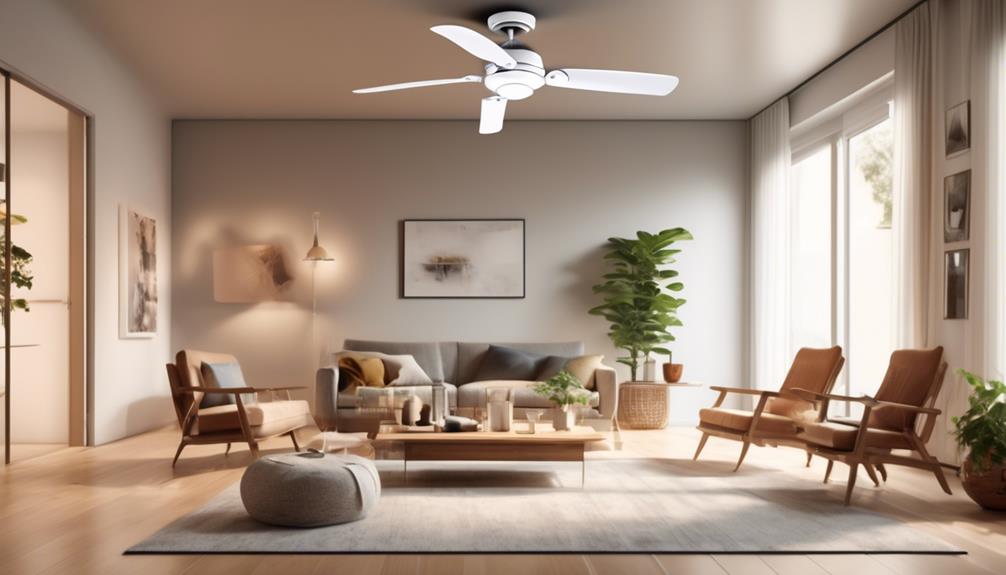
After implementing efficient practices to reduce energy usage and maintain optimal performance of your ceiling fan, it's important to also consider energy-saving strategies for its usage. By employing energy-saving techniques, you can further minimize the power consumption of your ceiling fan and save on electricity costs.
One effective strategy is to use the ceiling fan in conjunction with your air conditioning system. By setting your thermostat a few degrees higher and using the fan to circulate the cool air, you can reduce the workload on your AC unit and save energy. This method is especially effective in moderate climates where the cooling effect of the fan is sufficient.
Another cost-effective solution is to install a ceiling fan with an energy-efficient motor. Look for models that are ENERGY STAR certified, as they meet strict energy efficiency guidelines. These fans consume less electricity without compromising on performance, ensuring that you can enjoy a comfortable environment while saving energy.
Additionally, it's crucial to adjust the fan speed according to your needs. Running the fan at a higher speed when you're in the room and lowering it when you leave can significantly reduce energy usage. Remember to turn off the fan when you leave the room for an extended period, as there's no need to circulate air in an unoccupied space.
How to Choose an Energy-Efficient Ceiling Fan
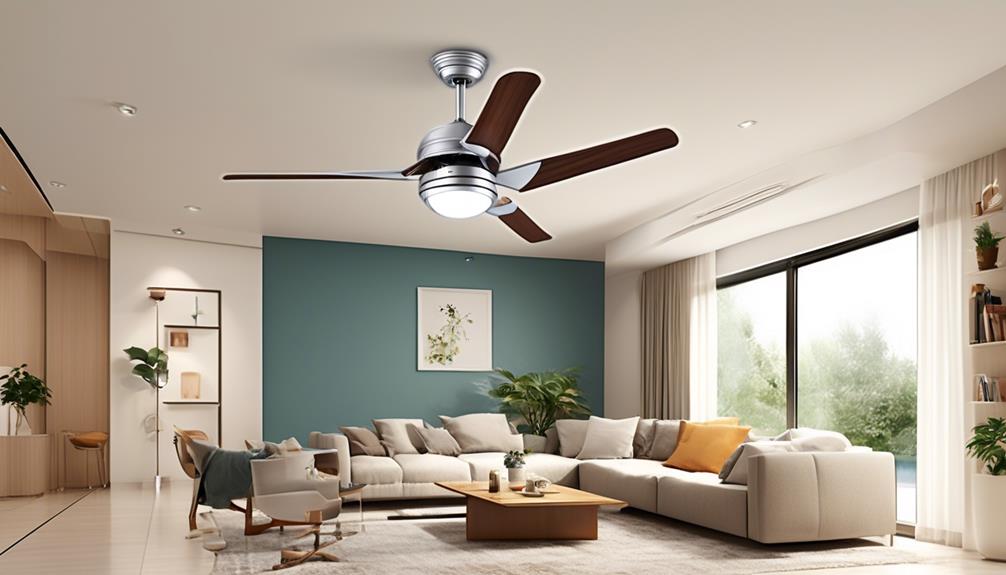
When choosing an energy-efficient ceiling fan, there are several factors to consider.
Firstly, look for models that are specifically designed to save energy, such as those with ENERGY STAR certification.
Additionally, consider the fan's size, as larger fans tend to move more air with less energy consumption.
Lastly, pay attention to the fan's motor efficiency and blade design, as these can greatly impact its energy efficiency.
Energy-Saving Fan Models
Choosing an energy-efficient ceiling fan involves considering factors such as power consumption, airflow efficiency, and motor efficiency. When it comes to energy-saving fan designs, there are several options available that can help reduce electricity usage and save on utility bills.
Here are three benefits of energy efficient fans:
- Lower Power Consumption: Energy-saving fan models are designed to consume less electricity compared to traditional fans. They utilize advanced motor technology and efficient blade designs to maximize airflow while minimizing power usage.
- Reduced Energy Costs: By choosing an energy-efficient ceiling fan, homeowners can significantly reduce their energy consumption, leading to lower electricity bills. These fans are designed to provide optimal performance while using minimal power.
- Environmental Impact: Energy-efficient fans contribute to a greener planet by reducing carbon emissions. By using less electricity, these fans help conserve energy resources and promote sustainability.
Factors to Consider
To select an energy-efficient ceiling fan, it's essential to consider various factors that can impact its power consumption and overall efficiency. There are several key factors affecting the energy efficiency of a ceiling fan.
Firstly, the size of the fan blades and motor play a crucial role. Larger blades and motors tend to consume more power.
Secondly, the fan's speed settings can significantly impact its energy consumption. Operating the fan at higher speeds will result in higher power usage.
Additionally, the design and construction of the fan can affect its efficiency. Fans with aerodynamically designed blades and motors tend to be more energy-efficient.
Finally, optimizing fan settings such as using the fan in conjunction with air conditioning or opening windows can further enhance energy efficiency.
Considering these factors will help you choose the most energy-efficient ceiling fan for your needs.
Ceiling Fan Power Consumption Myths Debunked
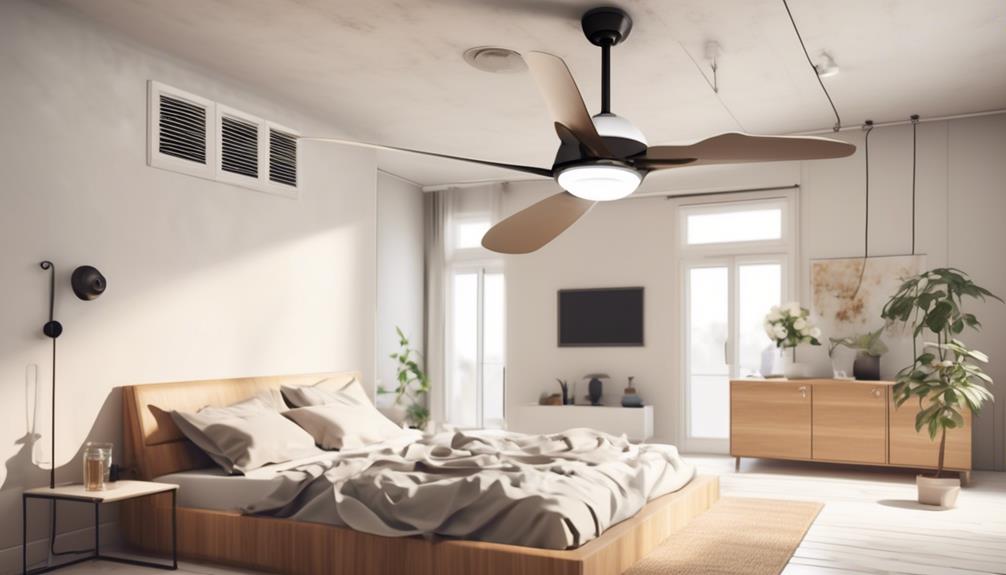
Ceiling fan power consumption myths can be debunked by examining the technical specifications and understanding the actual energy usage. Here are some common misconceptions about ceiling fan power consumption:
- Myth 1: Ceiling fans consume a significant amount of electricity. Contrary to popular belief, modern ceiling fans are designed to be energy-efficient. They typically consume only a fraction of the energy used by air conditioners or other cooling systems.
- Myth 2: Leaving the ceiling fan on all day is wasteful. While it's true that leaving any electrical appliance running unnecessarily can lead to energy waste, ceiling fans are specifically designed to operate for extended periods without significantly impacting energy consumption. They're an effective and energy-saving alternative to air conditioning.
- Myth 3: Ceiling fans don't provide adequate cooling. Some people believe that ceiling fans merely circulate air without actually cooling the room. However, ceiling fans create a wind chill effect that can make a room feel several degrees cooler. By combining ceiling fan usage with energy-saving techniques like adjusting thermostat settings, homeowners can achieve optimal comfort and energy efficiency.
Conclusion: Understanding and Managing Ceiling Fan Power Draw
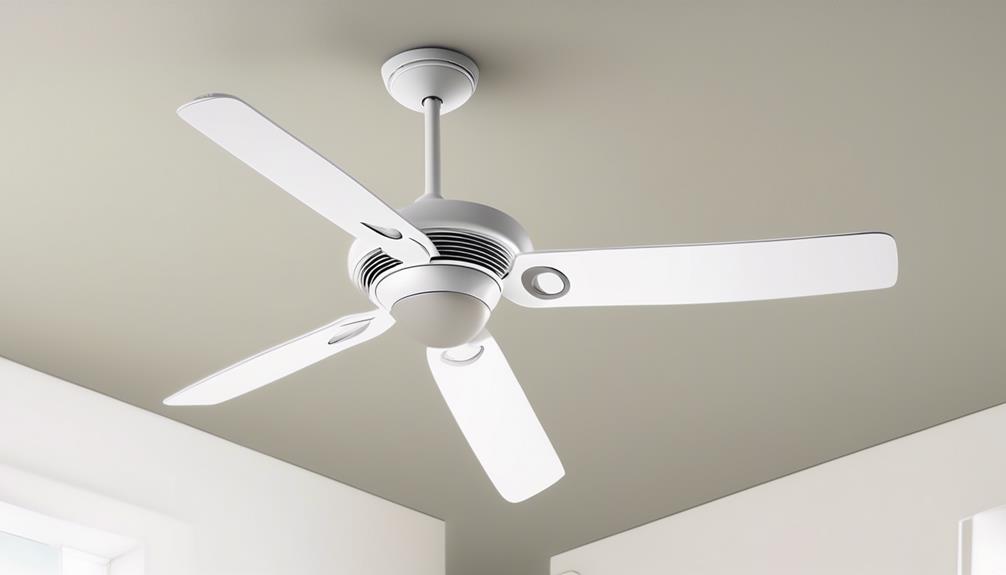
Understanding and managing the power draw of ceiling fans is crucial for optimizing energy efficiency and comfort in your home. By exploring energy saving technologies and understanding power efficiency ratings, you can make informed decisions to reduce your energy consumption and lower your electricity bills.
Energy saving technologies, such as LED lighting and variable speed motors, can significantly reduce the power draw of ceiling fans. LED lights consume less energy compared to traditional incandescent bulbs, while variable speed motors allow you to adjust the fan speed according to your needs, further minimizing energy usage.
Another important aspect to consider is the power efficiency rating of the ceiling fan. This rating, often referred to as the CFM/Watt ratio, indicates the amount of air movement (measured in cubic feet per minute, or CFM) produced per unit of electrical power consumed (measured in Watts). A higher CFM/Watt ratio signifies a more energy-efficient fan.
To manage the power draw of your ceiling fan effectively, consider using energy-saving technologies and selecting fans with higher power efficiency ratings. This won't only help reduce energy consumption but also enhance the overall comfort in your home.
Does the Strength of a Ceiling Fan Affect the Power Consumption?
The strength of ceiling fans can have an impact on power consumption. High-strength fans may require more energy to operate at their maximum speed, resulting in higher power consumption. It’s important to consider the strength of ceiling fans when trying to minimize energy usage in your home.
Frequently Asked Questions
Can Using a Ceiling Fan Increase My Electricity Bill?
Using a ceiling fan can increase our electricity bill. Ceiling fan energy consumption and electricity usage vary depending on factors such as fan speed and size. Although ceiling fans use less energy than air conditioners, they still consume power.
To minimize the impact on our bill, we can ensure the fan is set to an appropriate speed, turn it off when not needed, and consider using energy-efficient models.
Being mindful of these factors can help us manage our electricity usage effectively.
Is It More Energy-Efficient to Use a Ceiling Fan or an Air Conditioner?
When comparing energy-efficient cooling options, the question arises: is it more efficient to use a ceiling fan or an air conditioner? While both options have their merits, a ceiling fan can offer a cost-effective solution.
By circulating the air in a room, a ceiling fan can create a cooling effect without consuming excessive energy. In contrast, an air conditioner requires a significant amount of power to operate.
Therefore, if energy efficiency is a priority, opting for a ceiling fan over an air conditioner can be a wise choice.
How Does the Length of the Fan Blades Affect Power Consumption?
When considering the power consumption of a ceiling fan, it's important to examine the fan blade design and its impact on wind speed optimization.
The length of the fan blades plays a crucial role in determining power consumption. Longer blades can move more air at a lower speed, resulting in reduced power usage. This is because longer blades have a greater surface area, allowing for more efficient air movement.
Thus, fan blade length directly affects power draw in ceiling fans.
Do Ceiling Fan Features Like Remote Controls or Built-In Lights Consume More Power?
When considering ceiling fan efficiency, it's important to evaluate power consumption in relation to additional features like remote controls or built-in lights. These features can indeed impact power usage, as they require additional electrical components. However, the extent of their impact will vary depending on the specific fan model and the efficiency of these components.
To accurately compare power consumption, it's recommended to consult the manufacturer's specifications or conduct a power measurement analysis.
Can Using a Ceiling Fan in the Winter Help Reduce Heating Costs?
Using a ceiling fan in the winter can help reduce heating costs.
By reversing the direction of the fan blades, warm air that rises to the ceiling is pushed back down, creating a more even and comfortable temperature throughout the room.
This allows you to lower your thermostat a few degrees without sacrificing comfort.
Compared to using a space heater, ceiling fans are much more energy efficient, making them a cost-effective choice for both cooling and heating seasons.
Conclusion
In conclusion, understanding and managing the power draw of a ceiling fan is essential for energy efficiency.
One interesting statistic to note is that by choosing an energy-efficient ceiling fan, consumers can save up to 50% on their cooling costs compared to using air conditioning alone.
By considering factors such as wattage, fan speed, and energy ratings, individuals can make informed choices to reduce power consumption and save money in the long run.
- About the Author
- Latest Posts
Introducing Ron, the home decor aficionado at ByRetreat, whose passion for creating beautiful and inviting spaces is at the heart of his work. With his deep knowledge of home decor and his innate sense of style, Ron brings a wealth of expertise and a keen eye for detail to the ByRetreat team.
Ron’s love for home decor goes beyond aesthetics; he understands that our surroundings play a significant role in our overall well-being and productivity. With this in mind, Ron is dedicated to transforming remote workspaces into havens of comfort, functionality, and beauty.
Garage Door Opener
Silencing Your Garage Door Opener Humming: A Step-by-Step Guide
Discover how to silence your garage door opener humming with expert tips and tricks, transforming your space into a noise-free haven.

We’ve got you covered with practical steps to tackle the noise when it comes to silencing your garage door opener humming.
From pinpointing the source of the hum to exploring maintenance techniques, our guide offers a comprehensive approach to quieting your garage door opener.
By implementing these methods, you can create a peaceful environment without the constant background hum.
So, are you ready to transform your garage into a serene space?
Key Takeaways
- Inspect transformer for issues in Legacy 850/Standard Drive 650 models.
- Tighten all hardware components to minimize vibrations and humming.
- Regularly lubricate moving parts to reduce friction and noise.
- Adjust opener settings for optimized force and smooth operation.
Identifying the Source of Humming
To pinpoint the source of the humming noise in your garage door opener, start by examining the transformer located in the motor head for any signs of malfunction. The transformer is crucial for converting incoming power to the appropriate voltage needed to operate the DC motors in garage door openers like the Legacy 850 or Standard Drive 650.
If you own one of these models and notice a persistent humming sound, the transformer may be the culprit. For Legacy 850 or Standard Drive 650 units with a date code before 15198, replacing the transformer (part #39342RS) is often the solution. These replacement transformers for Overhead Door model openers can be easily sourced from www.OverheadDoorPartsOnline.com.
If you encounter any challenges during the replacement process or need further assistance, don't hesitate to reach out to your local Overhead Door distributor at 1-800-929-3667 for expert technical support. Identifying and addressing issues with the transformer can help silence the humming and ensure smooth operation of your garage door opener.
Inspecting and Tightening Hardware

Inspecting and tightening the hardware components of your garage door opener is crucial to identifying and addressing potential sources of humming noise. Begin by checking for loose nuts, bolts, and screws on the opener. Using a wrench, tighten all hardware components securely to reduce vibrations and minimize humming. Ensure that the mounting brackets, chains, and railings are properly fastened to prevent unnecessary movement and humming. It's also essential to inspect the motor head and drive system for any loose parts that could be causing the humming sound.
Regularly tightening and securing the hardware of your garage door opener is key to maintaining a quiet and efficient operation. Loose components can lead to increased vibrations and noise levels. By keeping all nuts, bolts, screws, mounting brackets, chains, railings, and motor head properly tightened, you can significantly reduce the humming noise coming from your garage door opener. This simple maintenance task can make a big difference in the overall performance of your garage door system.
Lubricating Moving Parts
When lubricating the moving parts of your garage door opener to reduce humming noise, ensure thorough coverage using a garage door lubricant or silicone-based option. Regular maintenance of your garage door opener includes proper lubrication of its moving parts such as the chain, belt, or screw drive. This lubrication helps reduce noise by preventing excess friction between the components. To assist you in understanding which lubricant to use and where to apply it, refer to the table below:
| Moving Parts | Recommended Lubricant |
|---|---|
| Chain Drive | Garage Door Lubricant |
| Belt Drive | Silicone-Based Lubricant |
| Screw Drive | Garage Door Lubricant |
Adjusting Garage Door Opener Settings

Adjust garage door opener settings to minimize humming noise by accessing the control panel and fine-tuning force and travel limits. Here's how to do it:
- Access the Control Panel:
- Locate the control panel on your garage door opener, usually found near the motor unit.
- Open the panel cover to reveal the adjustment settings.
- Adjust Force Settings:
- Use a flathead screwdriver to adjust the force settings on the opener.
- Increase or decrease the force to find the optimal setting that reduces resistance and noise.
- Fine-Tune Travel Limits:
- Locate the travel limit adjustment screws on the control panel.
- Gradually adjust the travel limits for both opening and closing directions.
- Test the door after each adjustment to ensure it opens and closes smoothly without excessive noise.
Seeking Professional Help
For addressing unusual humming sounds in your garage door opener, it is advisable to seek professional assistance from a certified technician. When dealing with a persistent humming noise coming from your garage door opener, it is crucial to involve experts who can accurately diagnose and resolve the issue. Certified technicians have the knowledge and experience to identify the source of the unusual sound and provide appropriate solutions to eliminate it effectively.
To guide you in understanding the benefits of seeking professional help, refer to the table below:
| Benefits of Seeking Professional Help | |
|---|---|
| 1. Expert Diagnosis | Certified technicians can pinpoint the exact cause of the humming noise. |
| 2. Precise Resolution | Professionals offer targeted solutions to resolve the issue efficiently. |
| 3. Technical Support | Get access to specialized assistance for your garage door opener complications. |
| 4. Prevent Further Damage | Avoid potential harm by allowing trained professionals to handle the motor head. |
When faced with a garage door opener humming problem, don't hesitate to reach out to a certified technician for technical support and expert troubleshooting.
Frequently Asked Questions
How Do I Silence My Garage Door Opener?
To silence your garage door opener, locate the source of the noise, which may be the motor head. Check the transformer for any issues causing the humming sound.
If you have a Legacy 850 or similar model, consider replacing the transformer part. For specific parts and guidance, visit OverheadDoorPartsOnline.com or reach out to a local distributor for assistance.
This process will help eliminate the unwanted noise from your garage door opener.
Why Is My Garage Door Opener Making a Humming Noise?
We discovered why our garage door opener is humming. It seems the culprit might be a faulty transformer in the motor head.
This issue is common in garage door openers with DC motors like the Overhead Door Phantom (777CD) and Legacy 850 (2029). If you have a Legacy 850 with a date code before 15198, replacing the transformer (part #39342RS) could be the fix.
Look for replacement transformers at www.OverheadDoorPartsOnline.com or call 1-800-929-3667 for help.
How Do I Make My Garage Door Not Loud?
To make our garage door not loud, we can start by lubricating the moving parts to reduce noise from friction. Check for loose chains or belts that might be causing the loudness.
Upgrading to a belt-driven opener can also help for quieter operation. Inspect the motor head for loose components.
If the noise persists, it's best to seek help from a professional technician for an effective solution.
How Do I Stop My Electric Buzzing?
If you're looking to halt that electric buzzing, we've got you covered.
First, pinpoint the source of the sound, often linked to a malfunctioning transformer in the motor head. Models like the Overhead Door Phantom (777CD) and Legacy 850 (2029) with DC motors commonly face this issue.
For specific models like the Legacy 850 or Standard Drive 650 predating 15198, think about replacing the transformer (part #39342RS).
Need replacement transformers? Check out www.OverheadDoorPartsOnline.com.
Conclusion
In conclusion, by following the steps outlined in this guide, we can effectively address the issue of garage door opener humming and ensure a more peaceful and efficient operation.
Remember, with regular maintenance and proper care, we can achieve a quieter and smoother functioning garage door opener.
Don't hesitate to seek professional assistance if needed, as it can further enhance the performance of your garage door system.
- About the Author
- Latest Posts
Introducing Ron, the home decor aficionado at ByRetreat, whose passion for creating beautiful and inviting spaces is at the heart of his work. With his deep knowledge of home decor and his innate sense of style, Ron brings a wealth of expertise and a keen eye for detail to the ByRetreat team.
Ron’s love for home decor goes beyond aesthetics; he understands that our surroundings play a significant role in our overall well-being and productivity. With this in mind, Ron is dedicated to transforming remote workspaces into havens of comfort, functionality, and beauty.
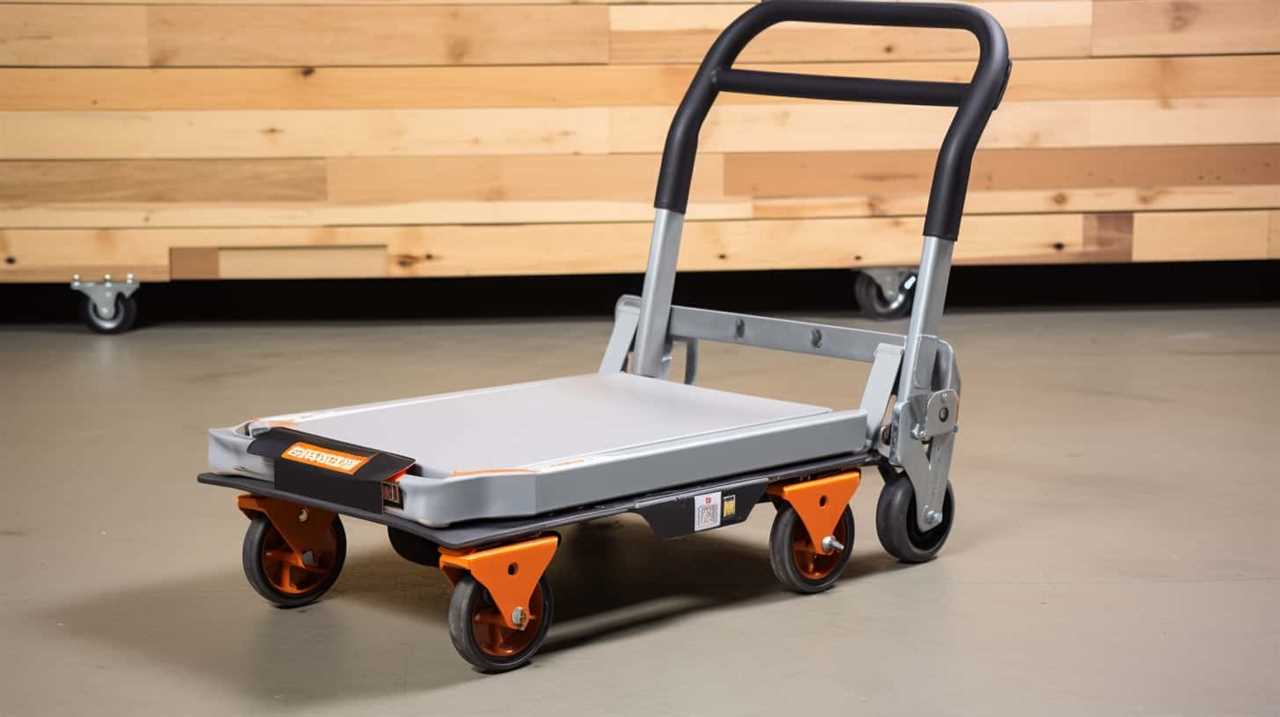
Do you ever feel exhausted from spending endless hours in the kitchen, feeling like you’re trapped in a continuous loop of chopping, stirring, and measuring?
Well, fear not, fellow home chefs, because we have the solution for you! Introducing 11 smart kitchen gadgets that will revolutionize the way you cook and elevate your culinary skills to new heights.
From a smart refrigerator that keeps your groceries fresh and organized, to a voice-activated assistant that helps you multitask with ease, these gadgets are a game-changer.
With Wi-Fi enabled ovens, automated herb gardens, and intelligent instant pots, you’ll be cooking like a pro in no time.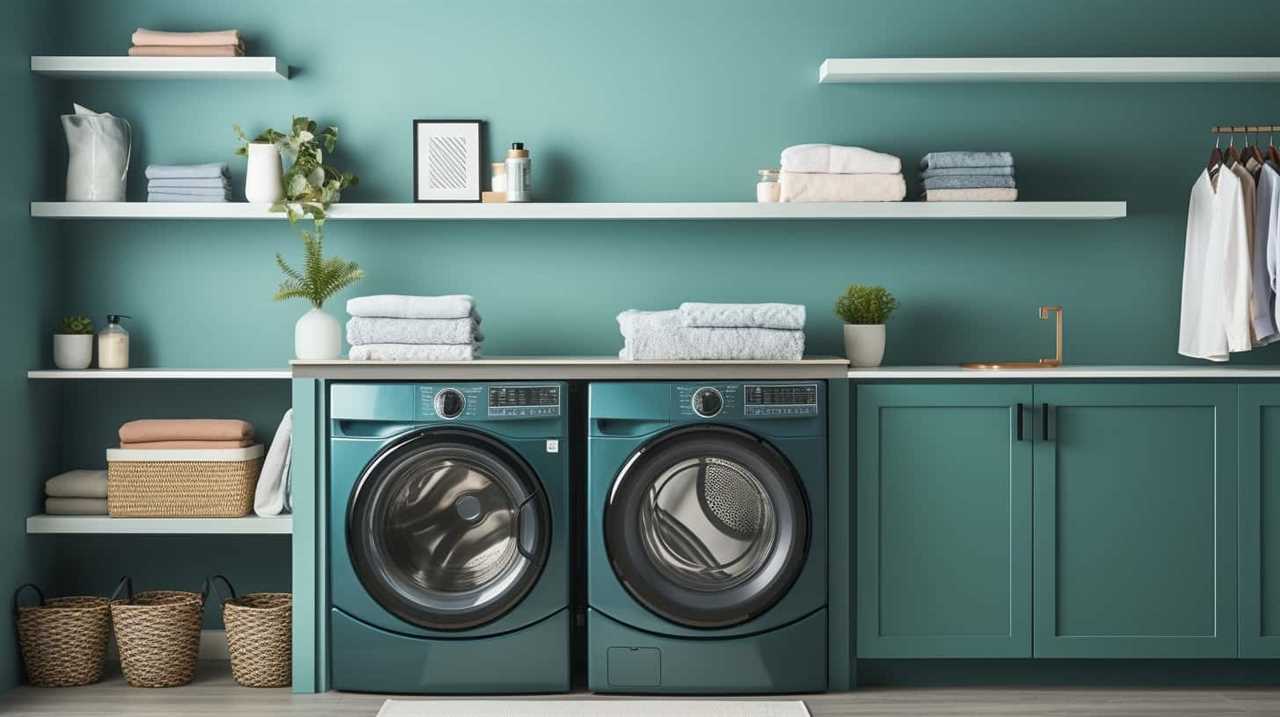
So, get ready to take your cooking to the next level with these must-have gadgets that every home chef needs.
Key Takeaways
- Smart kitchen gadgets like smart refrigerators, Wi-Fi enabled ovens, smart coffee makers, and automatic pot stirrers revolutionize food storage, cooking, and meal preparation.
- These smart appliances offer features such as remote control and monitoring, energy-saving technology integration, precise temperature settings, and real-time notifications for convenient and efficient cooking experiences.
- Smart kitchen appliances help reduce food waste, save time and effort in the kitchen, and provide a perfectly brewed cup of coffee or a deliciously cooked meal.
- Additional smart kitchen gadgets like precision sous vide cookers, smart slow cookers, smart air fryers, and automated herb gardens further enhance culinary creations, offer convenience, optimize energy usage, and promote a sustainable lifestyle.
Smart Refrigerator
We rely on our smart refrigerators to keep our food fresh and organized. These innovative appliances have revolutionized the way we store and manage our groceries, offering a range of features that go far beyond simple temperature control.
A smart refrigerator is equipped with energy-saving technology integration, making it not only convenient but also environmentally friendly. With advanced sensors and connectivity capabilities, a smart refrigerator can optimize energy usage based on your usage patterns. It can automatically adjust temperature settings during off-peak hours and limit energy consumption when the door is left open. This not only saves you money on your energy bills but also reduces your carbon footprint.
Additionally, a smart refrigerator can help you streamline your grocery shopping experience. With built-in cameras, you can easily check the contents of your fridge from anywhere using your smartphone. This eliminates the need to guess what you have or what you need to buy, ensuring that you never run out of essentials.
Furthermore, these intelligent appliances offer sophisticated organization features. They can categorize your groceries, track their expiration dates, and even suggest recipes based on the available ingredients. This not only saves you time but also helps reduce food waste.
Wi-Fi Enabled Oven
When it comes to upgrading your kitchen, a Wi-Fi enabled oven is a must-have for any home chef.
With the ability to control your oven remotely, you can start preheating while you’re still at the grocery store or adjust the temperature from the comfort of your couch.
Not only does it provide convenience, but it also offers enhanced cooking precision, allowing you to set precise temperatures and timers for perfectly cooked meals every time.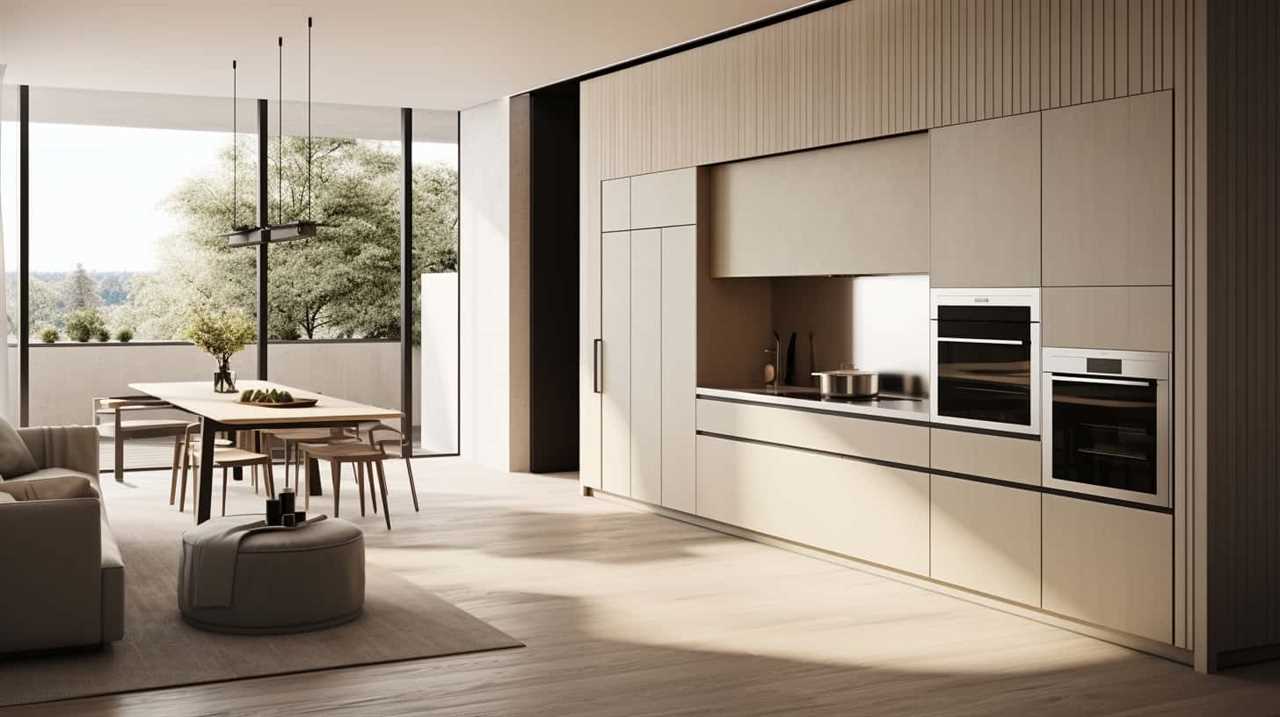
Plus, with integrated energy-saving technology, you can cook your favorite dishes while saving on energy consumption.
Remote Cooking Convenience
One essential addition to the smart kitchen is a Wi-Fi enabled oven, allowing us to remotely control and monitor our cooking process. With this innovative technology, we can now take control of our culinary creations from anywhere in the house or even when we’re not at home.
Here are some exciting features that come with a Wi-Fi enabled oven:
- Remote recipe sharing: Share your favorite recipes with friends and family, allowing them to recreate your delicious dishes with ease.
- Smart kitchen lighting: Adjust the lighting in your kitchen to create the perfect ambiance for cooking, all from the convenience of your smartphone.
- Real-time notifications: Receive alerts when your food is ready or when there’s a need for adjustment, ensuring perfectly cooked meals every time.
- Temperature control: Adjust the oven temperature remotely to ensure precise cooking results, giving you complete control and mastery over your recipes.
With a Wi-Fi enabled oven, cooking becomes a seamless and enjoyable experience, giving you the freedom to experiment and create culinary masterpieces with ease.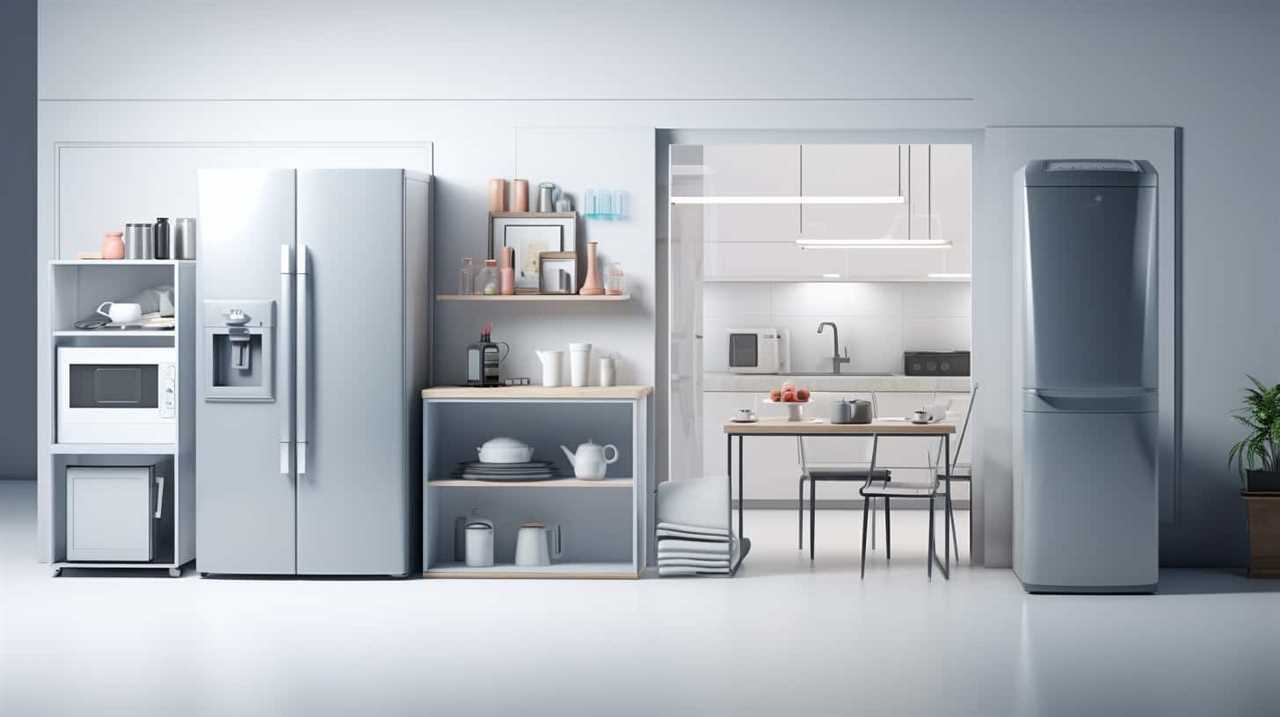
Enhanced Cooking Precision
To achieve enhanced cooking precision, a Wi-Fi enabled oven allows us to remotely control and monitor the cooking process using innovative technology. With precision cooking techniques becoming increasingly popular among home chefs, having an oven that offers advanced temperature control is essential. Imagine being able to adjust the temperature of your oven from the palm of your hand, ensuring that your dish is cooked to perfection every time.
To give you a better understanding of the capabilities of a Wi-Fi enabled oven, here is a table showcasing some of its key features:
| Feature | Description |
|---|---|
| Remote Control | Adjust temperature and cooking time from your smartphone or tablet. |
| Temperature Monitoring | Receive real-time alerts and updates on the progress of your dish. |
| Recipe Integration | Access a wide range of recipes and cook them with precision using guided cooking features. |
| Multi-Zone Cooking | Control different temperature zones within the oven to cook multiple dishes simultaneously. |
| Energy Efficiency | Track and optimize energy usage to reduce electricity consumption. |
With a Wi-Fi enabled oven, you can take your cooking to the next level by harnessing the power of technology and achieving unparalleled cooking precision. Say goodbye to overcooked or undercooked meals and hello to perfectly cooked dishes every time.
Energy-Saving Technology Integration
By integrating energy-saving technology into our Wi-Fi enabled oven, we’re able to optimize electricity consumption and reduce energy waste. This innovative feature allows us to take a step towards a more sustainable and eco-friendly kitchen. Here are some benefits of our energy-saving technology: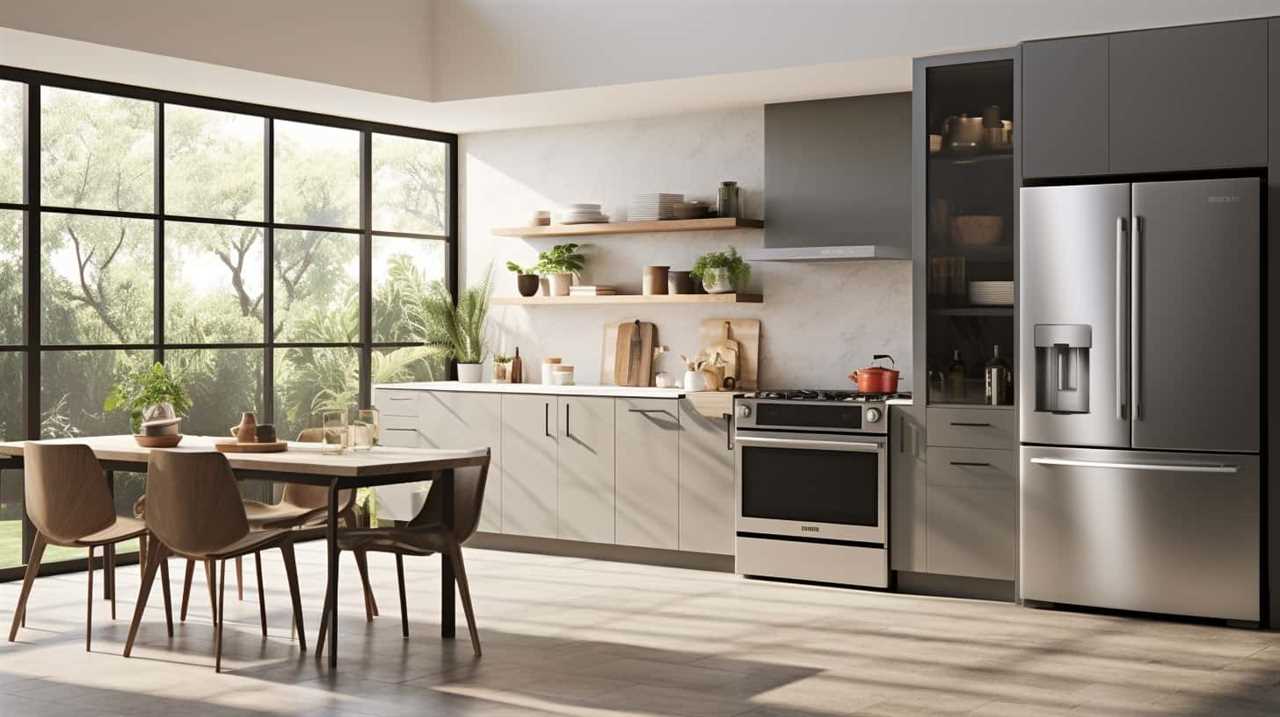
- Reduced electricity bills: With energy-efficient appliances, you can save money on your monthly electricity bills. Our Wi-Fi enabled oven intelligently manages power consumption, ensuring that only the necessary amount of energy is used.
- Environmental consciousness: By investing in energy-efficient appliances, you’re contributing to a greener future. These appliances help reduce greenhouse gas emissions and minimize your carbon footprint.
- Smart lighting control: Our Wi-Fi enabled oven integrates with smart lighting control systems, allowing you to optimize energy usage throughout your kitchen. You can easily dim or turn off unnecessary lights, saving electricity without sacrificing functionality.
- Enhanced cooking experience: Energy-saving technology doesn’t compromise on performance. Our Wi-Fi enabled oven still delivers exceptional cooking results while conserving energy. You can enjoy perfectly cooked meals while knowing you’re helping the environment.
With these energy-saving features, you can transform your kitchen into a more sustainable and efficient space, making a positive impact on both your wallet and the planet.
Voice-Activated Assistant
With a voice-activated assistant, we can effortlessly control and streamline our cooking experience. Imagine being able to adjust oven temperatures, set timers, and even search for recipes without lifting a finger. Voice-activated assistants like Amazon Alexa or Google Assistant have revolutionized the way we interact with our smart kitchen gadgets.
The benefits of voice-activated assistants in the kitchen are undeniable. They offer convenience and efficiency, allowing us to perform tasks hands-free. We can simply ask our assistant to preheat the oven, add items to our shopping list, or even find substitutions for ingredients. This not only saves time but also enhances safety by reducing the need for manual interaction with appliances while cooking.
However, voice-activated assistants also have their limitations. Accurate voice recognition can sometimes be a challenge, leading to misunderstandings or incorrect commands. Additionally, privacy concerns have been raised regarding the constant listening and data collection by these devices.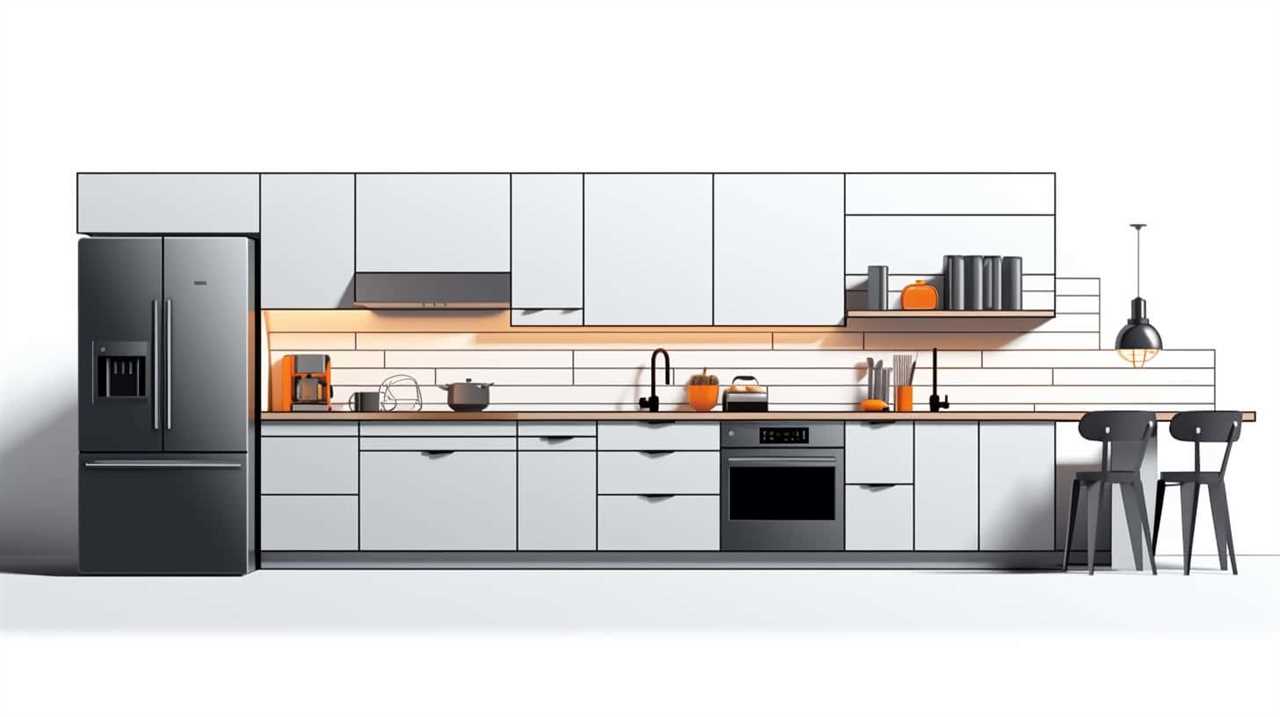
Nevertheless, the future of voice-activated assistants in the kitchen looks promising. As technology continues to advance, we can expect more seamless integration with kitchen appliances. Imagine a future where our voice-activated assistant can suggest personalized recipes based on our dietary preferences or even provide step-by-step cooking instructions.
Smart Coffee Maker
Now let’s move on to another must-have smart kitchen gadget: a smart coffee maker. Gone are the days of waiting for ages for your coffee to brew. With a smart coffee maker, you can have a perfectly brewed cup of coffee ready for you as soon as you wake up.
Here are four reasons why a smart coffee maker is an essential addition to your connected kitchen appliances:
- Convenience: A smart coffee maker allows you to control and monitor your coffee brewing process from anywhere using your smartphone. No more rushing to the kitchen first thing in the morning, simply set the timer and wake up to the aroma of freshly brewed coffee.
- Customization: With a smart coffee maker, you can easily adjust the strength and temperature of your coffee to suit your taste preferences. Plus, some models even come with a built-in smart coffee grinder, ensuring that you always use freshly ground beans for the perfect cup.
- Energy Efficiency: Many smart coffee makers come with energy-saving features, such as automatic shut-off and power management. This not only helps you save on electricity bills but is also better for the environment.
- Integration: A smart coffee maker can seamlessly integrate with other connected kitchen appliances, allowing you to create a fully automated and synchronized cooking experience.
Now that we’ve explored the wonders of a smart coffee maker, let’s move on to our next kitchen gadget: the automatic pot stirrer.
Automatic Pot Stirrer
An automatic pot stirrer is a valuable addition to any smart kitchen setup. This automated mixing device takes the hassle out of stirring pots and allows for hands-free cooking. With an automatic pot stirrer, you can say goodbye to constantly standing over the stove, tirelessly stirring your dishes.
Imagine being able to set your pot to simmer and walk away knowing that your food will be perfectly stirred. Whether you’re making soups, sauces, or even risotto, this smart gadget ensures even heat distribution and prevents food from sticking to the bottom of the pot.
Here is a comparison table to help you choose the best automatic pot stirrer for your kitchen:
| Features | Brand A | Brand B | Brand C |
|---|---|---|---|
| Price | $50 | $70 | $90 |
| Power | 300W | 400W | 500W |
| Timer | Yes | Yes | No |
| Speeds | 3 | 5 | 4 |
As you can see, each brand offers different features at varying price points. Consider your specific needs and budget when choosing the right automatic pot stirrer for you.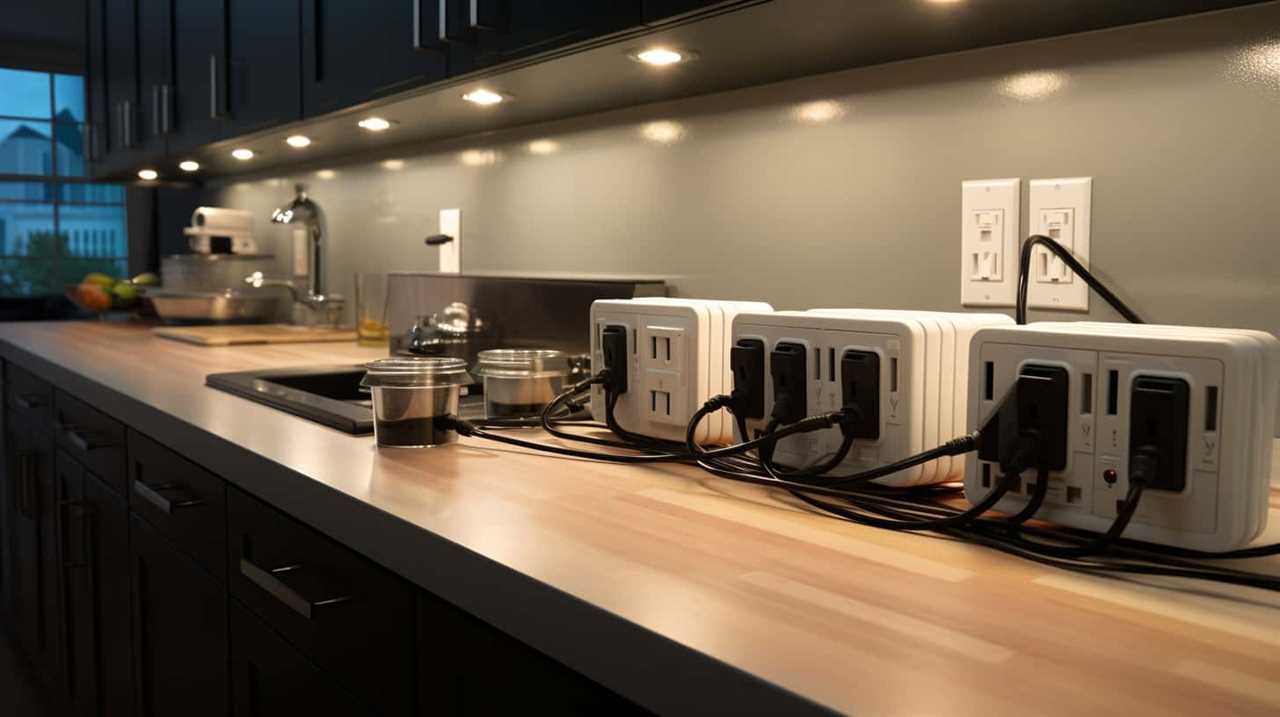
With an automatic pot stirrer, you can save time and effort in the kitchen, allowing you to focus on other tasks or simply relax while your meal cooks itself. Embrace the convenience and efficiency of hands-free cooking with this innovative gadget.
Precision Sous Vide Cooker
We highly recommend investing in a precision sous vide cooker for our smart kitchen setup. This gadget is a game-changer for any home chef looking to elevate their cooking skills. Sous vide technology allows for precise and consistent cooking temperatures, resulting in perfectly cooked meals every time.
Here are four reasons why a precision sous vide cooker is a must-have:
- Restaurant-quality results: With precision cooking, you can achieve the same level of tenderness and juiciness found in high-end restaurants. Your meats will be cooked to perfection, with flavors and textures that are hard to achieve using traditional cooking methods.
- Time-saving convenience: Sous vide cooking takes the guesswork out of meal preparation. Simply set the desired temperature and cooking time, and let the precision sous vide cooker do the rest. It frees up your time to focus on other tasks while your food cooks slowly and evenly.
- Improved flavor infusion: By vacuum sealing your ingredients in a bag before cooking, you can lock in flavors and aromas. This technique allows for better flavor infusion, resulting in more flavorful and delicious dishes.
- Versatility in cooking: Whether you’re cooking meats, vegetables, or even desserts, a precision sous vide cooker can handle it all. It’s a versatile tool that gives you the flexibility to experiment with various recipes and ingredients.
Investing in a precision sous vide cooker will bring your cooking to a whole new level of precision and perfection. It’s a must-have gadget for any home chef who desires mastery in the kitchen.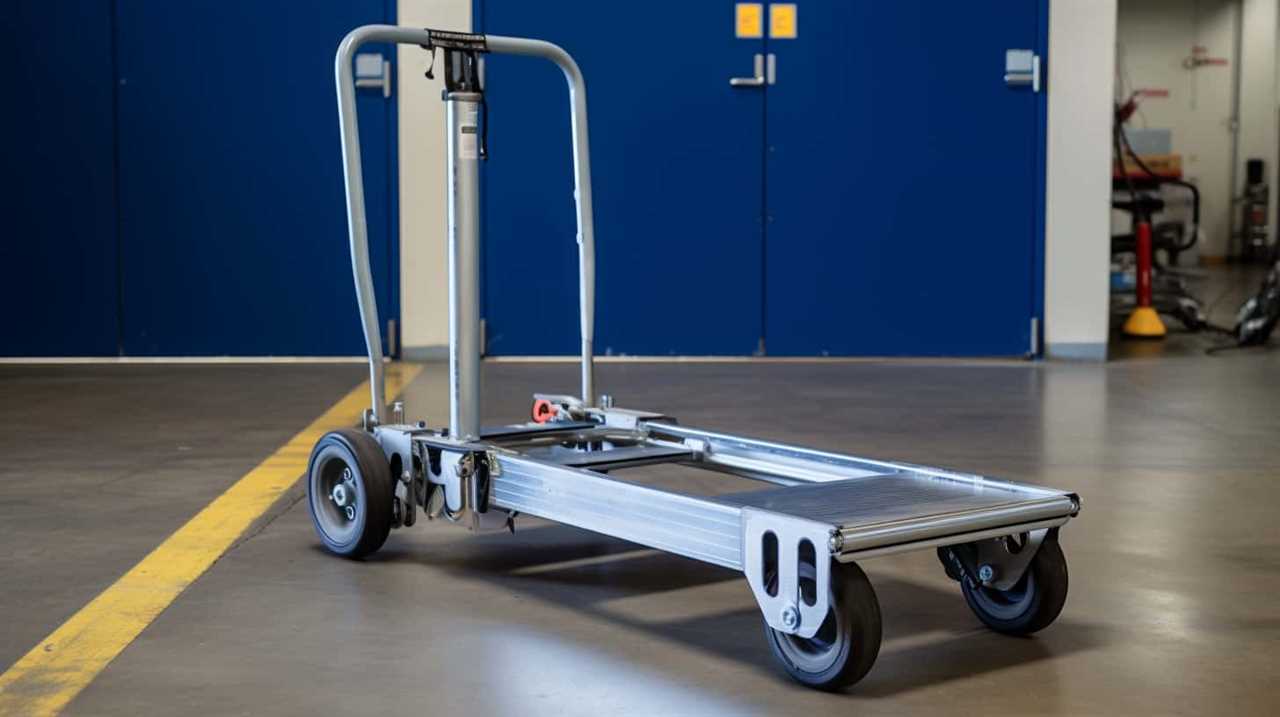
Smart Slow Cooker
Now let’s talk about the Smart Slow Cooker, a game-changer for busy home chefs.
With its time-saving meal prep feature, you can easily set up your ingredients in the morning and come home to a deliciously cooked meal.
But it doesn’t stop there – this smart gadget also offers convenient cooking features, allowing you to adjust temperature and cooking times with just a few taps on your smartphone.
And the best part?
The Smart Slow Cooker enhances flavor infusion, ensuring that every bite is packed with mouthwatering taste.
Time-Saving Meal Prep
To streamline meal preparation and maximize efficiency in the kitchen, our go-to solution is the use of a smart slow cooker. With its advanced features and convenience, this kitchen gadget is a game-changer for busy home chefs.
Here are four reasons why a smart slow cooker is a must-have for time-saving meal prep:
- Meal planning made easy: The smart slow cooker allows you to plan your meals in advance, ensuring that you have delicious, home-cooked meals ready when you need them.
- Kitchen organization simplified: With the smart slow cooker, you can prepare ingredients in the morning and let the cooker do the rest. This frees up valuable counter space and reduces the number of pots and pans you need to use.
- Precise cooking control: The smart slow cooker offers precise temperature control and cooking timers, allowing you to achieve perfect results every time.
- Remote monitoring and control: Some smart slow cookers can be connected to your smartphone, allowing you to monitor and control the cooking process from anywhere. This means you can start cooking while you’re at work and come home to a hot, ready-to-eat meal.
Convenient Cooking Features
Maximizing efficiency in the kitchen, our solution for convenient cooking features includes utilizing a smart slow cooker. With its time-saving recipes and multi-functional capabilities, this appliance is a game-changer for any home chef.
Imagine coming home to the aroma of a perfectly cooked meal, without having to spend hours in the kitchen. The smart slow cooker allows you to set the cooking time and temperature remotely using your smartphone, so you can have dinner ready when you walk through the door.
It also offers a variety of cooking modes, such as sautéing, steaming, and baking, making it a versatile addition to your kitchen arsenal. Whether you’re a busy professional or a culinary enthusiast, the smart slow cooker will revolutionize the way you cook.
Say goodbye to long hours spent slaving over the stove and hello to effortless, delicious meals.
Enhanced Flavor Infusion
Utilizing a smart slow cooker, we enhance flavor infusion in our dishes. With the help of advanced technology, our cooking experience is taken to a whole new level. Here are some ways we achieve flavor perfection:
- Smart Spice Rack: Our smart slow cooker comes equipped with a built-in smart spice rack, allowing us to easily access and incorporate a wide variety of spices into our dishes. This ensures that every bite is bursting with flavor.
- Flavor Infusion Techniques: Our smart slow cooker incorporates innovative flavor infusion techniques, such as steam infusion and sous vide cooking. These methods enhance the flavors of our ingredients, resulting in dishes that are rich, tender, and incredibly delicious.
- Precision Temperature Control: With precise temperature control, our smart slow cooker ensures that our dishes are cooked at the perfect temperature for maximum flavor extraction. This means that every ingredient is cooked to perfection, resulting in mouthwatering dishes.
- Customizable Cooking Settings: Our smart slow cooker allows us to customize our cooking settings, giving us the flexibility to experiment with different flavors and cooking techniques. This allows us to create unique and tasty dishes that truly reflect our culinary creativity.
Now, let’s move on to the next exciting smart kitchen gadget: the bluetooth food scale.
Bluetooth Food Scale
We love using a smart Bluetooth food scale to accurately measure ingredients for our recipes. This innovative kitchen gadget combines wireless connectivity with cooking accuracy, making it an essential tool for any home chef.
With a Bluetooth food scale, we can easily connect it to our smartphones or tablets, allowing us to conveniently track and record our measurements in real-time.
Gone are the days of guessing or estimating ingredient quantities. With a Bluetooth food scale, we can achieve precise measurements, ensuring that our recipes turn out perfectly every time. The scale uses advanced technology to deliver accurate readings, taking the guesswork out of cooking and baking.
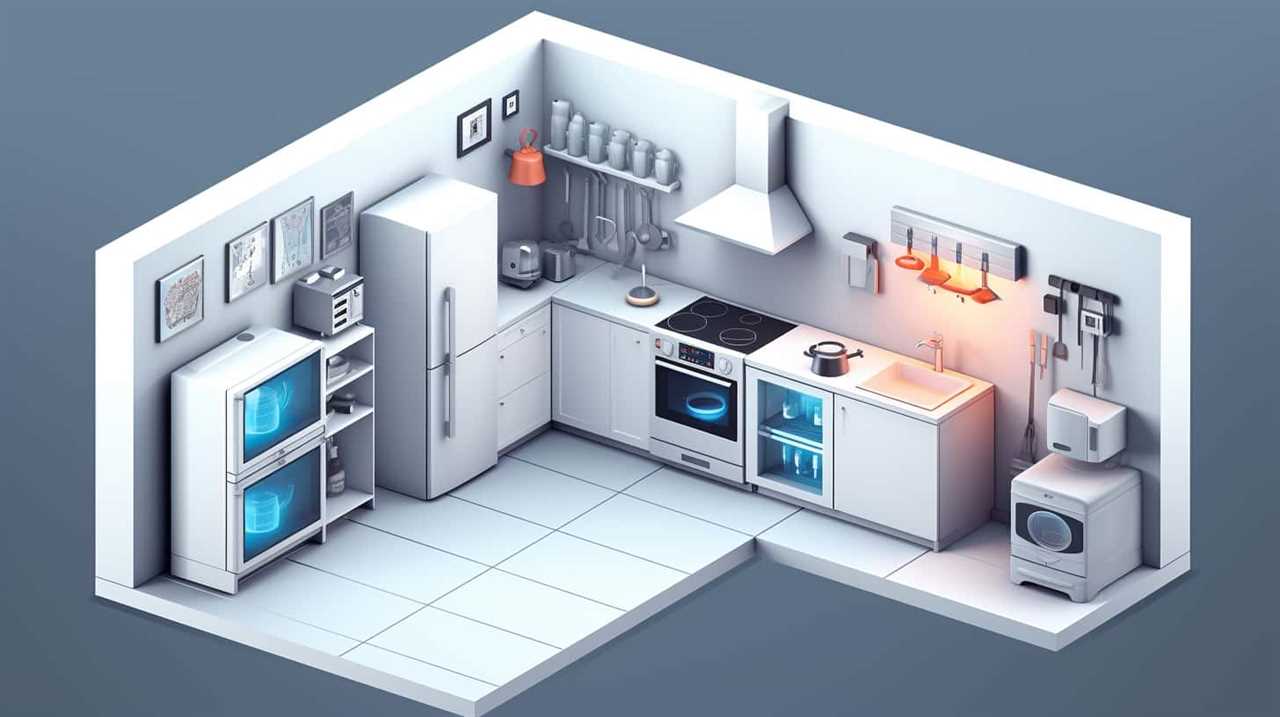
Not only does a Bluetooth food scale provide precise measurements, but it also offers additional features that enhance our cooking experience. Some models come with built-in timers and recipe apps, helping us stay organized and efficient in the kitchen. We can easily follow recipes and measure ingredients simultaneously, ensuring that everything is done with precision and in a timely manner.
As we transition into the next section about the ‘intelligent instant pot,’ we can see how the Bluetooth food scale complements this smart kitchen gadget. By accurately measuring ingredients with our Bluetooth food scale, we can ensure that our recipes are perfectly executed in our intelligent instant pot, creating delicious and flavorful meals with ease.
Intelligent Instant Pot
To get the most out of our cooking experience, let’s harness the power of the intelligent instant pot. This innovative kitchen gadget combines intelligent meal planning with automated pressure cooking to revolutionize the way we prepare meals. Here are four reasons why the intelligent instant pot should be a staple in every home chef’s kitchen:
- Effortless Meal Prep: With the intelligent instant pot, meal planning becomes a breeze. It has built-in sensors that can detect the type of ingredients you put in and suggest suitable cooking times and temperatures. Gone are the days of constantly monitoring the stove or oven – the instant pot takes care of everything.
- Time-Saving Convenience: The automated pressure cooking feature of the intelligent instant pot significantly reduces cooking time. It uses advanced algorithms to calculate the optimum pressure and temperature, resulting in faster cooking without sacrificing flavor or tenderness.
- Versatility and Customization: Whether you’re in the mood for a hearty stew or a delicate dessert, the intelligent instant pot has you covered. It offers a multitude of cooking modes, from slow cooking to sautéing, and even has a yogurt-making function. Plus, you can easily customize settings to suit your preferences.
- Smart Control and Connectivity: The intelligent instant pot can be controlled remotely using a smartphone app. Imagine being able to start cooking dinner on your way home from work, so it’s ready when you arrive. With its Wi-Fi and Bluetooth capabilities, this smart kitchen gadget keeps you connected and in control.
With the intelligent instant pot, you can elevate your cooking skills to the next level. It’s a game-changer that empowers home chefs to create delicious, healthy meals with ease and precision.
Smart Air Fryer
One essential kitchen gadget that every home chef needs is a smart air fryer. This innovative device combines the convenience of a traditional air fryer with the power of smart technology.
With a smart air fryer, you can enjoy all your favorite fried foods with a fraction of the oil and calories. It uses hot air circulation to cook food evenly and crisp it up to perfection. The smart features allow you to control and monitor the cooking process using your smartphone or voice commands. You can adjust the temperature, cooking time, and even receive notifications when your food is ready.
But the benefits of a smart air fryer go beyond just convenience. It also offers a range of healthy cooking options. You can use it to make crispy vegetables, juicy chicken breasts, or even bake a batch of guilt-free cookies. With its precise temperature control and rapid cooking capabilities, you can achieve delicious results every time. Plus, the smart technology ensures that you never overcook or burn your food.
Whether you’re a health-conscious chef or just looking for a convenient way to enjoy your favorite fried foods, a smart air fryer is a must-have kitchen gadget. It combines the best of both worlds – delicious taste and healthy cooking options.
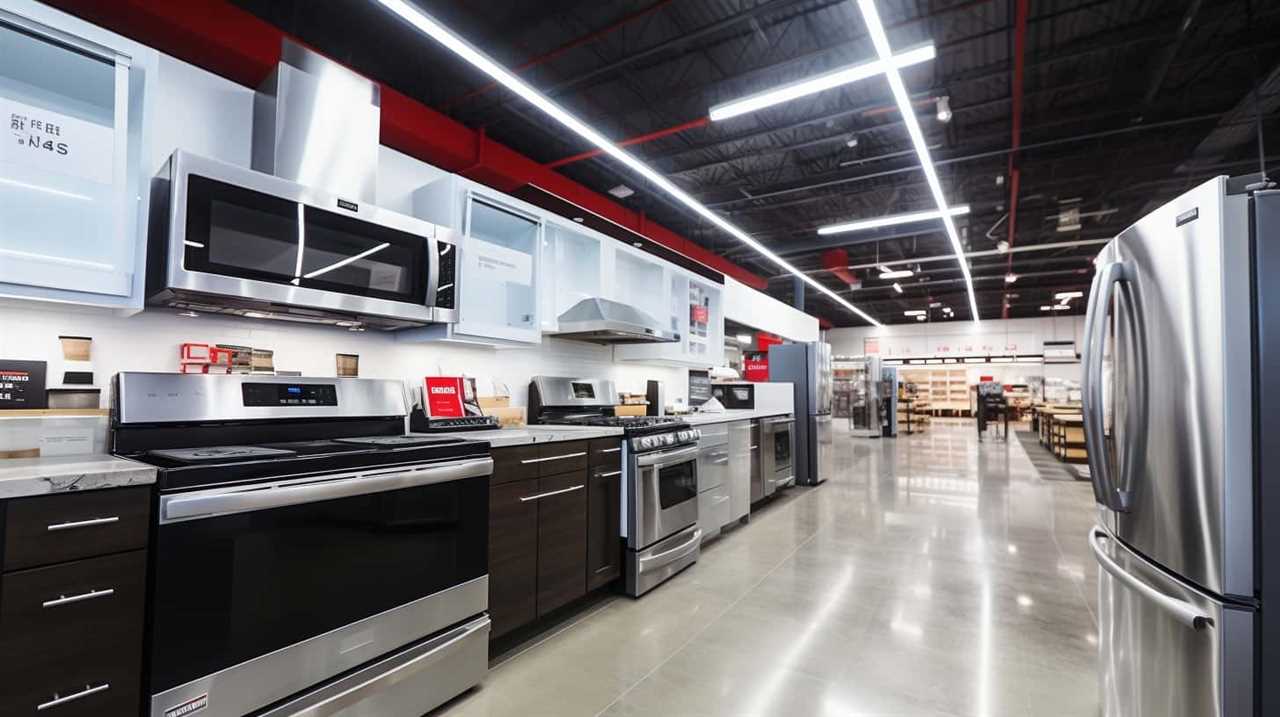
Automated Herb Garden
Continuing from the previous subtopic, let’s explore another essential kitchen gadget that every home chef needs: an automated herb garden.
With advancements in technology, smart herb gardens have become a game-changer for those who want to elevate their cooking skills. Here are some benefits of having an automated herb garden in your kitchen:
- Convenience: Imagine having fresh herbs at your fingertips, without the hassle of going to the store or dealing with wilted herbs. An automated herb garden allows you to grow a variety of herbs right in your kitchen, ensuring their freshness whenever you need them.
- Space-saving: If you have limited space in your kitchen, an automated herb garden is a perfect solution. These compact devices can fit on your countertop or even hang on the wall, providing you with a convenient and space-saving way to grow your favorite herbs.
- Efficiency: Smart herb gardens use automated indoor gardening techniques to optimize the growth of your herbs. With built-in sensors and timers, they ensure the right amount of light, water, and nutrients for your plants, resulting in healthier and more abundant harvests.
- Sustainability: By growing your own herbs, you reduce your reliance on store-bought produce, which often comes wrapped in plastic and travels long distances. An automated herb garden allows you to embrace a more sustainable lifestyle by cultivating fresh, organic herbs right at home.
Incorporating a smart herb garden into your kitchen not only enhances the flavors of your dishes but also brings a sense of pride and accomplishment as you master the art of growing your own ingredients. With these automated indoor gardening techniques, you can enjoy the benefits of fresh herbs all year round, elevating your culinary creations to new heights.
Frequently Asked Questions
How Much Energy Does a Smart Refrigerator Consume Compared to a Traditional Refrigerator?
Smart refrigerators consume significantly less energy compared to traditional refrigerators. This energy consumption comparison is one of the many benefits of owning a smart refrigerator.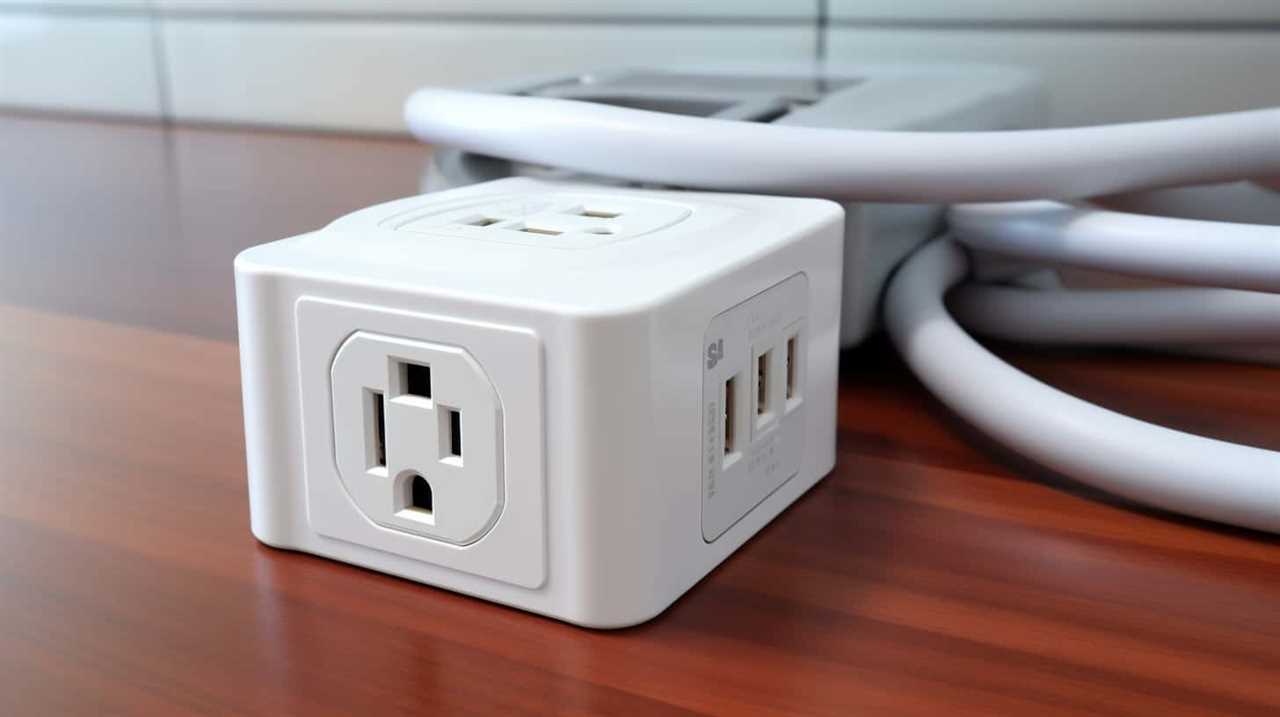
With advanced features like energy-saving modes, temperature control, and smart sensors, these gadgets optimize energy usage to keep your food fresh while minimizing electricity consumption.
Can a Voice-Activated Assistant Be Paired With Other Smart Kitchen Gadgets Like the Smart Coffee Maker or the Automated Herb Garden?
Yes, a voice-activated assistant can be paired with other smart kitchen gadgets like the smart coffee maker or the automated herb garden. This integration offers convenience and efficiency in the kitchen. With a simple voice command, you can brew your coffee or tend to your herbs without lifting a finger.
However, there are some drawbacks to using voice activated assistants in the kitchen, such as potential misinterpretation of commands or limited compatibility with certain gadgets.
What Is the Cooking Capacity of a Smart Slow Cooker?
The cooking capacity of a smart slow cooker is essential to know for any home chef. It allows us to plan and prepare meals efficiently.

With programmable settings, we can set the cooking time and temperature according to our recipe, ensuring perfectly cooked dishes every time. This feature is especially helpful for busy individuals who want to come home to a delicious meal without spending hours in the kitchen.
Can the Bluetooth Food Scale Be Connected to a Smartphone App for Tracking Nutritional Information?
Yes, the Bluetooth food scale can indeed be connected to a smartphone app for tracking nutritional information. This innovative feature allows us to easily monitor our food intake and make informed choices about our diet.
Additionally, by integrating the scale with a smart refrigerator, we can optimize our meal planning and reduce food waste. Not only does this save us time and money, but it also promotes sustainability by minimizing energy consumption.
It’s truly a game-changer for any home chef seeking mastery in the kitchen.
Are There Any Safety Features in Place for the Automated Pot Stirrer to Prevent Accidents or Spills?
When it comes to the automated pot stirrer, safety is a top priority. This innovative gadget is designed with built-in safety features to prevent accidents and spills. With its advanced technology, it ensures that the pot is securely attached and stable, minimizing the risk of any mishaps.
Additionally, the automated pot stirrer is equipped with sensors that can detect any irregularities or potential hazards, instantly alerting the user and taking necessary precautions. So you can confidently cook without worrying about any safety concerns.
Are Any of the Smart Kitchen Gadgets Environmentally Friendly?
Many smart home eco devices, including smart kitchen gadgets, are designed with sustainability in mind. These gadgets use energy-efficient technology and eco-friendly materials to reduce their environmental impact. From smart thermostats to composting appliances, there are plenty of options for creating an environmentally friendly kitchen.
Conclusion
In conclusion, these 11 smart kitchen gadgets are a game-changer for any home chef. With the convenience of a smart refrigerator, the efficiency of a Wi-Fi enabled oven, and the help of a voice-activated assistant, cooking has never been easier.
Don’t forget the smart coffee maker for that perfect cup of joe and the automatic pot stirrer to save you time and effort. So why wait? Embrace the future of cooking and upgrade your kitchen with these technologically-savvy gadgets.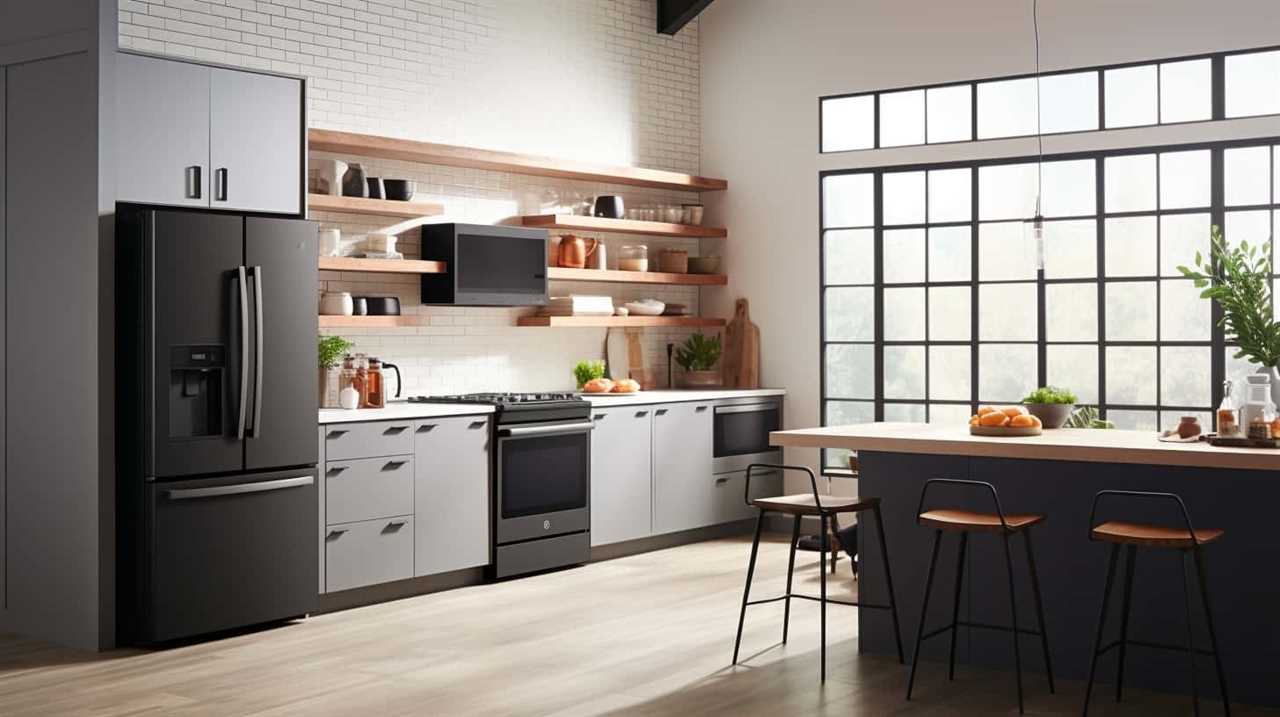
Remember, ‘The kitchen is the heart of the home.’
- About the Author
- Latest Posts
Introducing Charles, the Editor in Chief at ByRetreat, whose passion for interior design and editorial excellence elevates every remote workspace to new heights. With his keen eye for detail, impeccable taste, and expertise in design, Charles brings a wealth of knowledge and creativity to the ByRetreat team.
As the Editor in Chief of a renowned lifestyle blog, Charles has honed his skills in curating captivating content and staying up-to-date with the latest trends in interior design. His deep understanding of aesthetics and the power of storytelling through design enables him to create remote workspaces that are not only visually stunning but also rich in personality and meaning.
Garage Door Opener
Finding the Ideal Garage Door Opener Outlet Location
Get ready to discover the crucial factors determining the perfect placement for your garage door opener outlet.

When determining the best spot for a garage door opener socket, think of it as finding the missing piece to make your garage convenient and functional.
The placement of this outlet can significantly impact the ease of use and safety of your garage door opener system. So, where should it be positioned for optimal performance?
Let's explore the key factors that come into play to ensure a seamless experience with your garage door opener.
Key Takeaways
- Place the outlet around 9 feet above the door for optimal accessibility and functionality.
- Position the outlet slightly off-center to avoid interference with future insulation and maintenance.
- Ensure safety by locating the receptacle 3 feet back and 10 feet from the outside wall.
- Consult with professionals to guarantee proper placement and enhance usability.
Importance of Outlet Placement
Why is the placement of the outlet for your garage door opener crucial for optimal functionality and safety?
When it comes to the garage door opener, the electrical outlet placement plays a significant role in ensuring smooth operation and safety. By strategically locating the outlet around 9 feet above the door, slightly off-center, accessibility is enhanced without impeding future insulation or drywall modifications. This positioning also minimizes the risk of interference with the garage door opener's mechanisms, promoting seamless functionality.
Moreover, considering factors like ease of access, safety, and compliance with electrical regulations is essential for a secure and efficient garage door opener setup. Therefore, choosing the right spot for the outlet is paramount to guaranteeing the proper functioning and safety of your garage door opener.
It's not just about convenience; it's about ensuring that your garage door opener operates optimally while meeting essential safety standards and regulatory requirements.
Factors Affecting Outlet Location

Considering the layout and structure of your garage, several key factors influence the optimal placement of the outlet for your garage door opener. The door height plays a crucial role, with the ideal outlet location typically around 9 feet above the door for convenient access.
It's essential to position the outlet slightly to the side to avoid interference with future insulation and drywall work. Communicating with builders before installation can ensure the proper placement and prevent common mistakes that might arise.
Be cautious not to place the receptacle too far from the door as this could lead to issues with the opener cord reaching comfortably. Ensuring that the outlet location allows for smooth operation and easy maintenance is crucial for long-term convenience.
Safety Considerations for Outlet Placement
For optimal safety and convenience in outlet placement for your garage door opener, it's essential to position the receptacle 3 feet back from the end of the open garage door and approximately 10 feet from the outside wall. Placing the outlet in this specific location helps prevent any potential hazards that could arise from the door mechanisms or the opener's cord. By ensuring the receptacle is behind the opener, you maintain a clear pathway when the door is fully open, decreasing the risk of tripping or entanglement.
To further enhance safety, it's crucial to confirm that the cord length of the opener, typically between 3 to 4 feet, comfortably reaches the receptacle without any stretching or strain. If needed, use lumber to frame out a lower place to secure the cord of the opener to the receptacle adequately. Additionally, prioritize installing a Ground Fault Circuit Interrupter (GFCI) protected receptacle to add an extra layer of safety measures to your garage.
Convenience and Accessibility of Outlets

To ensure optimal convenience and accessibility for your garage door opener outlet, positioning it approximately 9 feet above the door allows for easy access during operation. This placement ensures that the outlet is within reach of the opener cord, reducing the risk of any operational issues. Additionally, consider situating the outlet slightly off-center to accommodate future insulation and drywall work, providing flexibility for any renovations.
When communicating with builders about the placement of the garage door opener outlet, make sure to convey the importance of having it positioned at the right height and distance from the door. Common mistakes, such as placing the receptacle too far from the door, can hinder optimal accessibility and convenience. By discussing the outlet location with builders beforehand, you can ensure that it is installed in a way that meets your needs and maximizes usability.
To illustrate further, here is a table outlining the key considerations for positioning your garage door opener outlet:
| Consideration | Description |
|---|---|
| Height Above Door | Approximately 9 feet for easy access during operation. |
| Distance from Opener Cord | Within reach to prevent operational issues. |
| Off-Center Placement | Slightly off-center to accommodate future insulation and drywall work. |
| Communication with Builders | Discuss with builders to determine the best outlet placement before installation. |
| Avoiding Common Mistakes | Ensure the receptacle is not placed too far from the door for optimal accessibility. |
Tips for Optimal Garage Door Opener Outlet Location
When determining the ideal location for your garage door opener outlet, prioritize accessibility and functionality by placing it at a height of around 9 feet above the door. This placement ensures easy reach and connection to the opener cord, facilitating seamless operation.
To optimize your garage door opener outlet location, consider the following tips:
- Positioning: Place the outlet slightly to the side to avoid interference with future insulation and drywall work.
- Consultation: Communicate with builders or professionals before installation to ensure proper placement and avoid common mistakes.
- Reachability: Avoid placing the receptacle too far from the door to prevent issues with the opener cord reaching the power source.
- Functionality: Ensure the outlet location allows for easy access and connection to maintain a smooth and efficient operation of your garage door opener.
Frequently Asked Questions
Where Should a Garage Door Opener Outlet Be Placed?
We recommend placing a garage door opener outlet near the ceiling, around 9 feet above the door for easy access. Positioning it slightly to the side can prevent interference and future issues with insulation or drywall.
Opt for a location a few feet above the door height and off-center for practical accessibility. Avoid surface mounting and ensure it's within reach of the opener cord.
Consult professionals for proper placement to avoid common mistakes.
Where Should Outlets Be Placed in a Garage?
When outfitting a garage with outlets, strategic placement is key. Consider functionality and convenience. Ensure outlets are accessible and comply with safety standards to avoid interference with garage door openers.
Optimal positioning is crucial for smooth operation. By placing outlets thoughtfully, we guarantee efficiency and ease of access. Properly spaced outlets contribute to a well-organized, functional workspace.
Take care in positioning outlets for a seamless garage experience.
Can the Garage Door Opener Be on Same Circuit as Garage Receptacles?
Yes, the garage door opener can be on the same circuit as the garage receptacles. This setup is convenient for installation and operation, simplifying wiring and electrical planning.
It's a common practice in residential settings to share the circuit between the garage door opener and receptacles. However, it's crucial to consult with an electrician to ensure the circuit can handle the combined load of both devices effectively.
How Do I Program My Garage Door Opener Outlet?
We've programmed many garage door opener outlets! Locate the 'Learn' button on the unit. Press and release it, then quickly hit the remote's button to program it.
Wait for the light to flash, showing successful programming. Test the remote for proper operation.
Always follow the manufacturer's instructions for specific steps. It's as easy as that to program your garage door opener outlet.
Conclusion
In conclusion, finding the ideal location for your garage door opener outlet is like finding the perfect key for a locked door – it unlocks convenience and safety.
By considering factors such as placement, safety measures, and accessibility, you can ensure smooth operation and peace of mind.
Remember, consulting with a professional and following best practices can guarantee a seamless experience every time you open your garage door.
- About the Author
- Latest Posts
Introducing Ron, the home decor aficionado at ByRetreat, whose passion for creating beautiful and inviting spaces is at the heart of his work. With his deep knowledge of home decor and his innate sense of style, Ron brings a wealth of expertise and a keen eye for detail to the ByRetreat team.
Ron’s love for home decor goes beyond aesthetics; he understands that our surroundings play a significant role in our overall well-being and productivity. With this in mind, Ron is dedicated to transforming remote workspaces into havens of comfort, functionality, and beauty.
-

 Decor1 week ago
Decor1 week agoMaximalist Decor Explained: Embrace More Style
-

 Vetted2 weeks ago
Vetted2 weeks ago15 Best Foot Massagers for Neuropathy to Soothe Your Feet and Relieve Discomfort
-

 Vetted3 weeks ago
Vetted3 weeks ago15 Best Sports Laundry Detergents for Keeping Your Activewear Fresh and Clean
-

 Vetted3 weeks ago
Vetted3 weeks ago15 Best Tall Toilets for Seniors That Combine Comfort and Safety
-

 Vetted4 weeks ago
Vetted4 weeks ago15 Best Dish Scrubbers to Keep Your Kitchen Sparkling Clean
-

 Vetted2 days ago
Vetted2 days ago15 Best Cleaners for Fiberglass Showers to Keep Your Bathroom Sparkling Clean
-

 Decor4 weeks ago
Decor4 weeks agoWhat Is Eclectic Home Decor
-

 Vetted7 days ago
Vetted7 days ago15 Best Organic Pest Control Solutions for a Naturally Pest-Free Home













